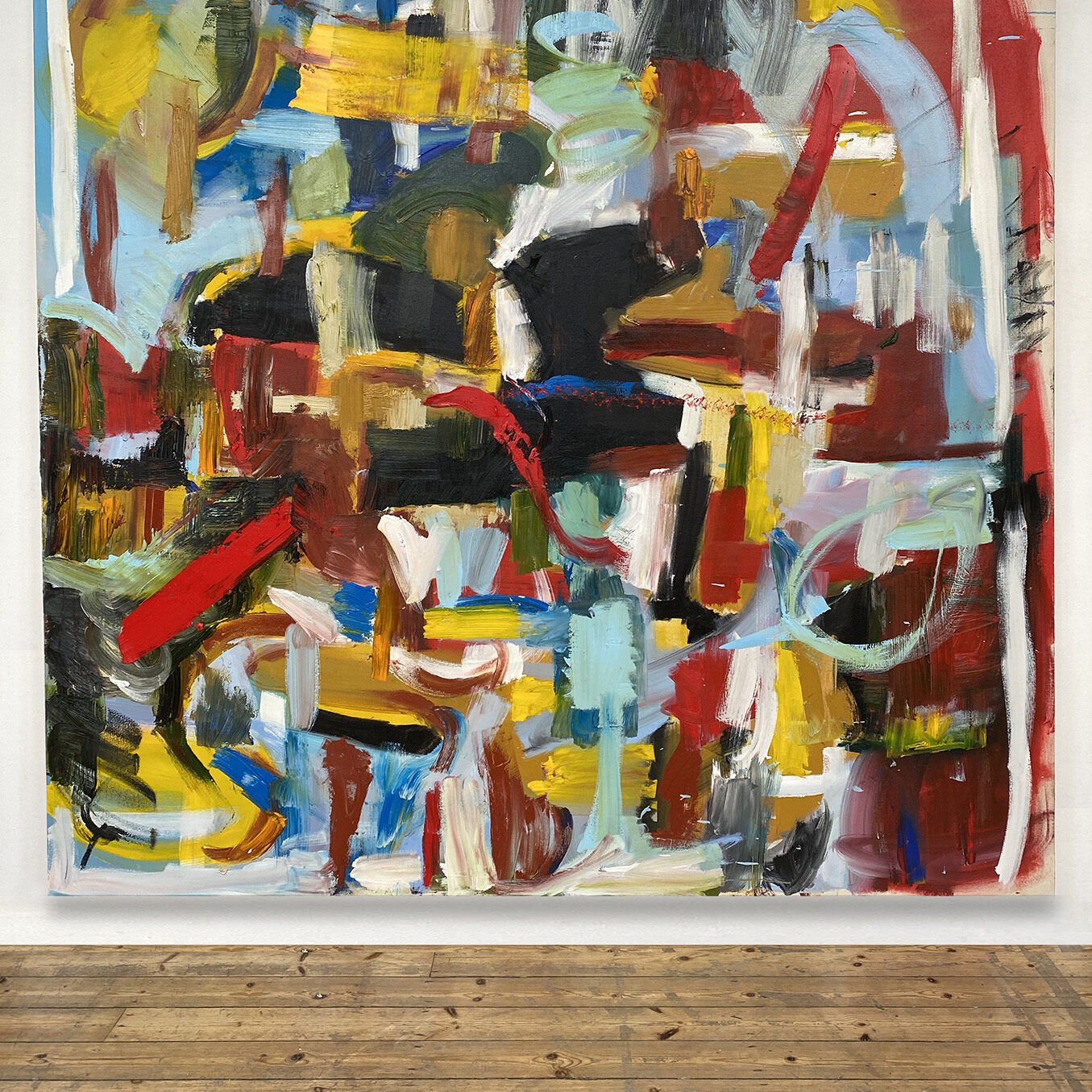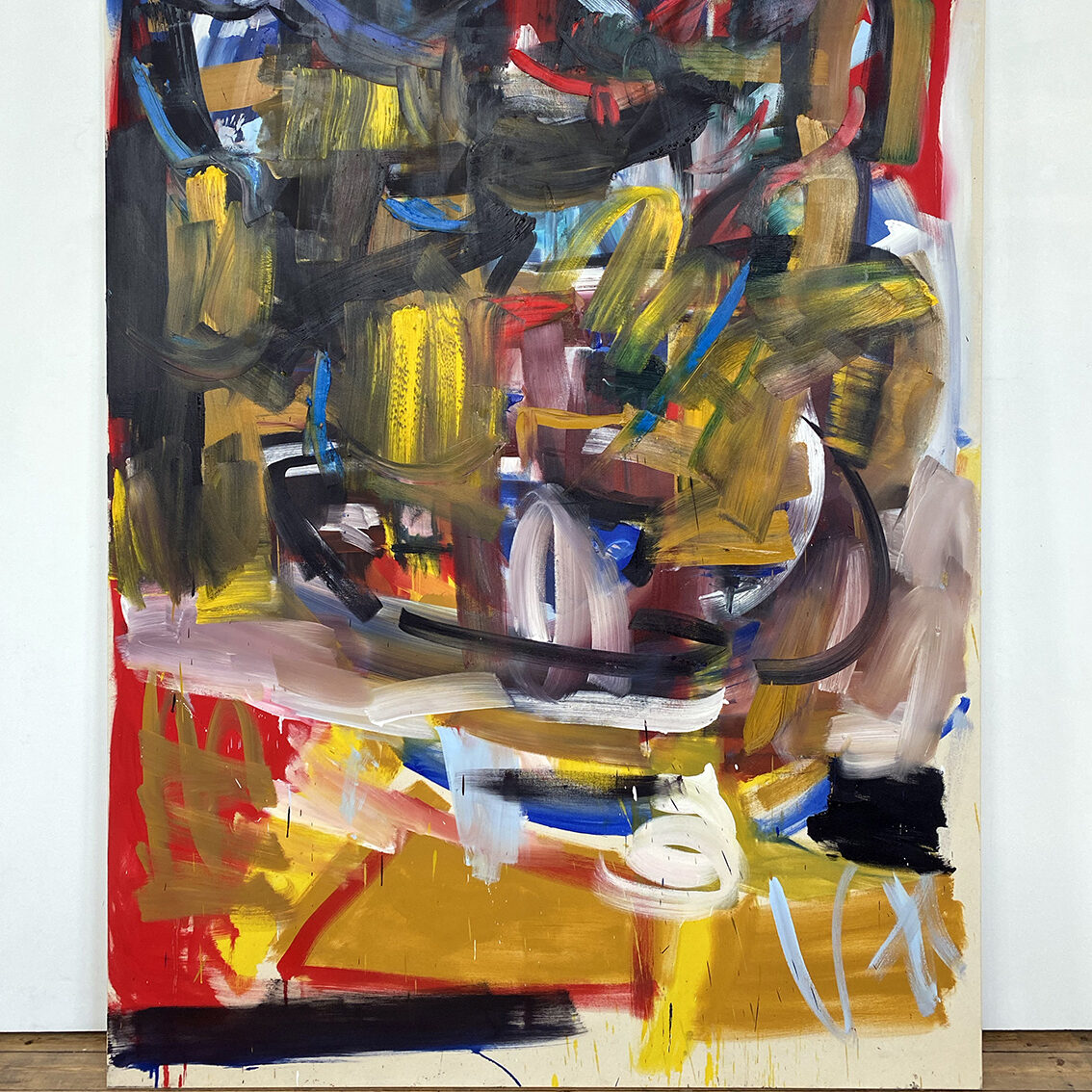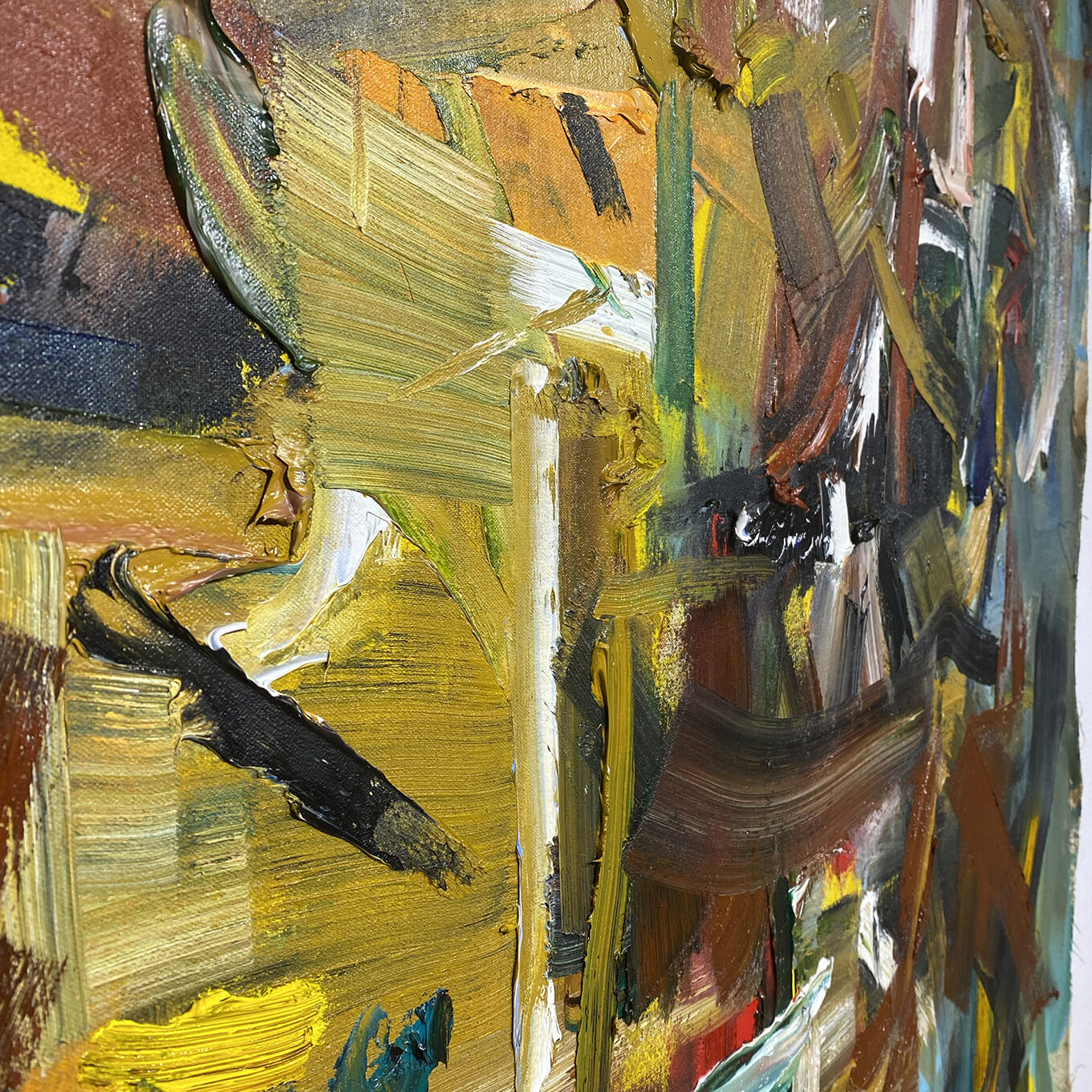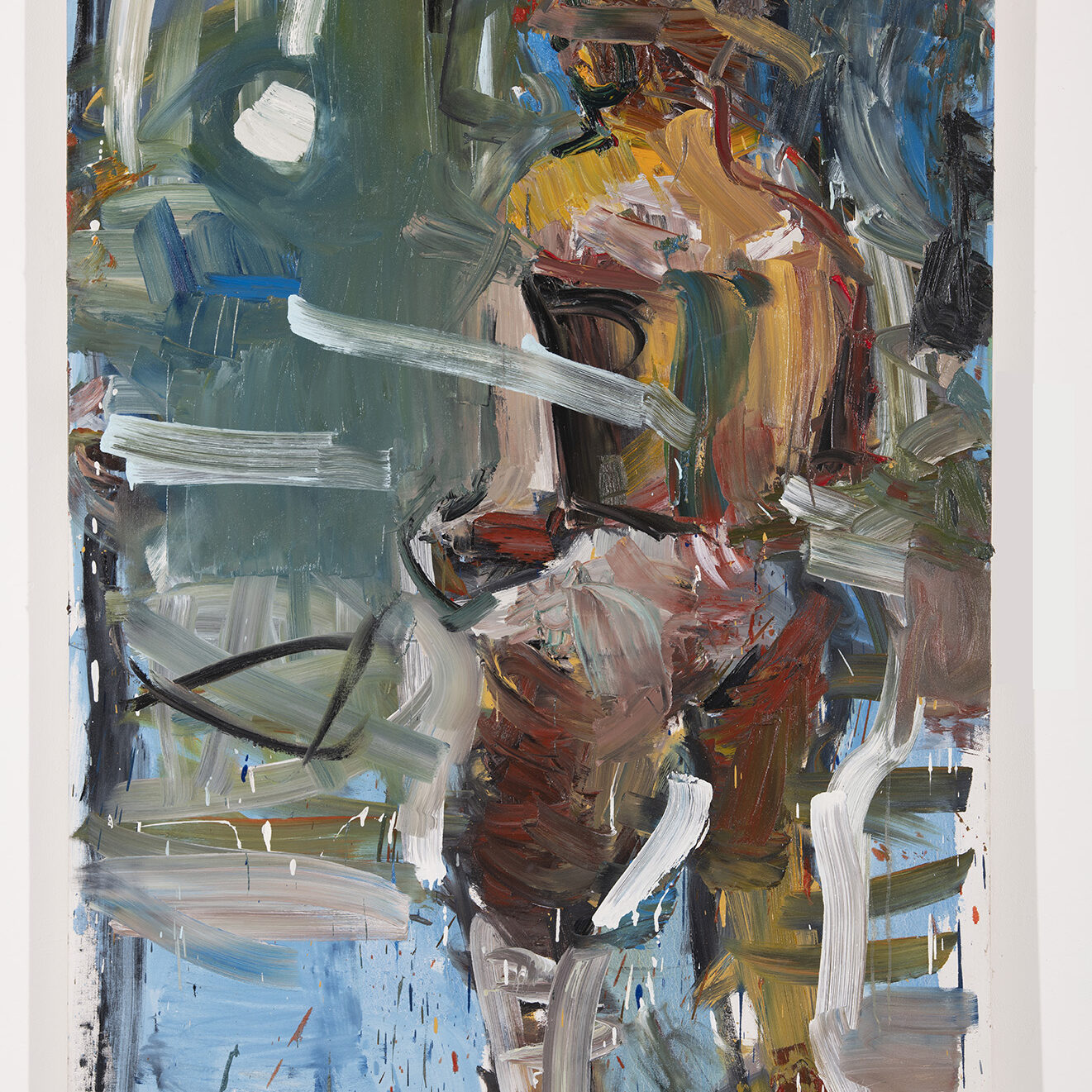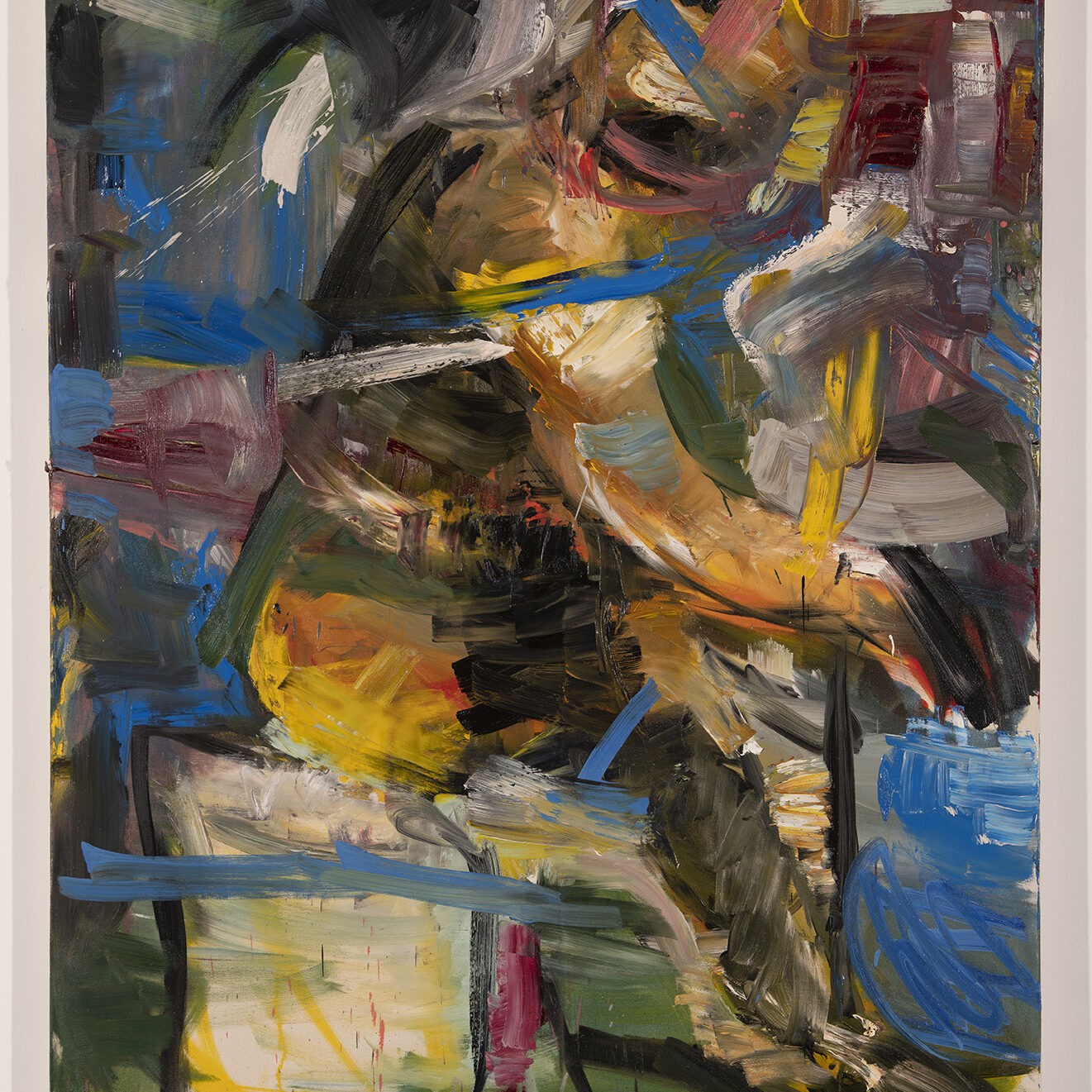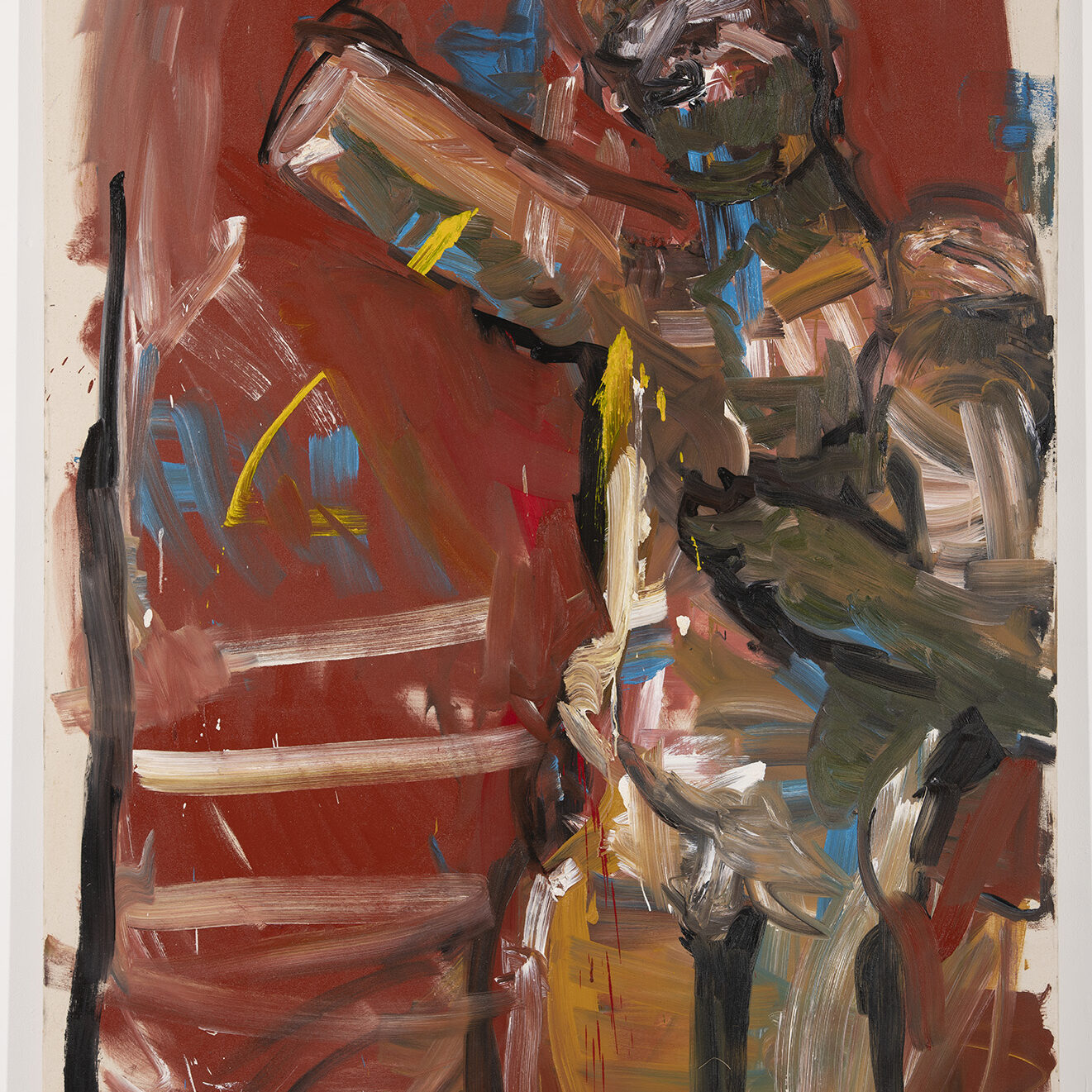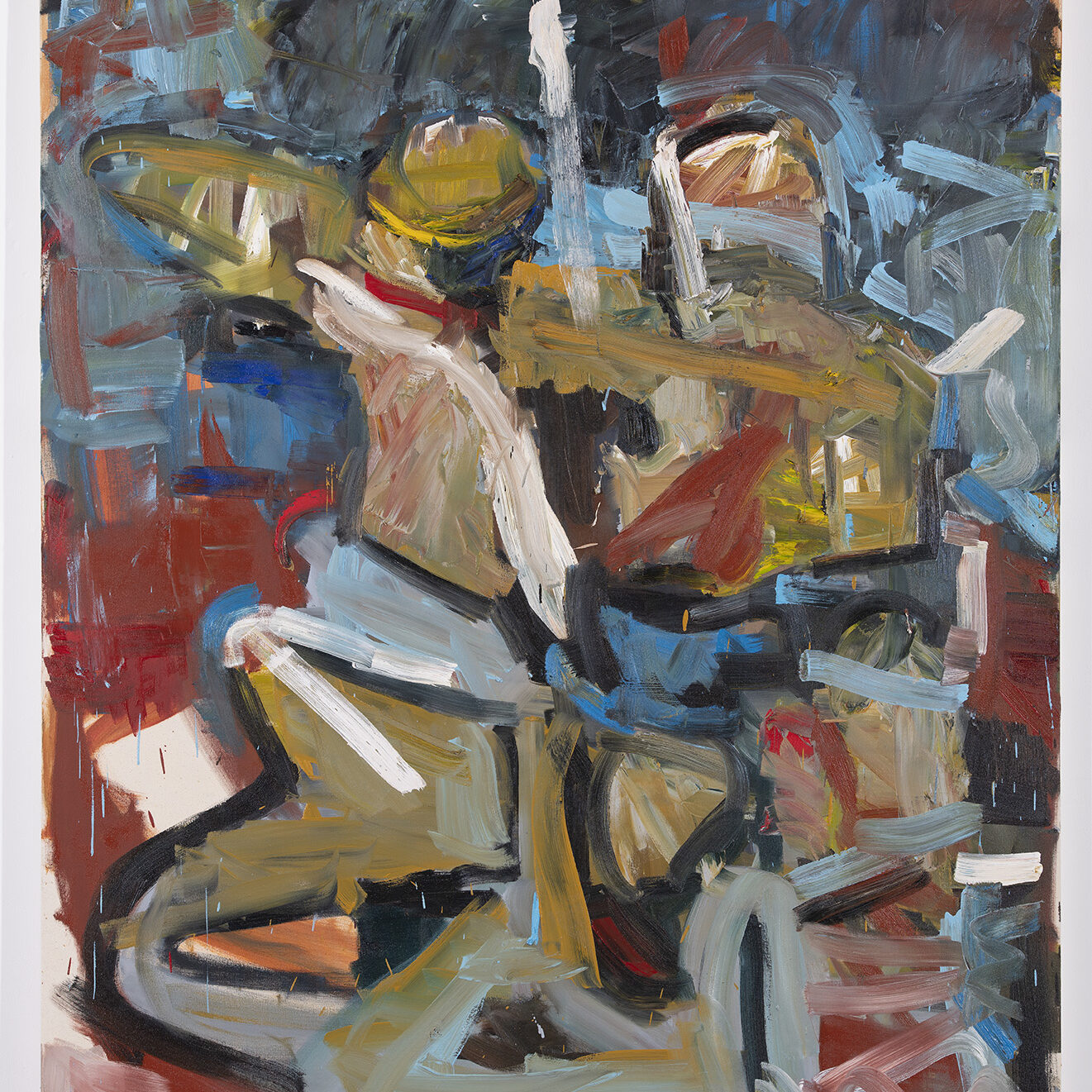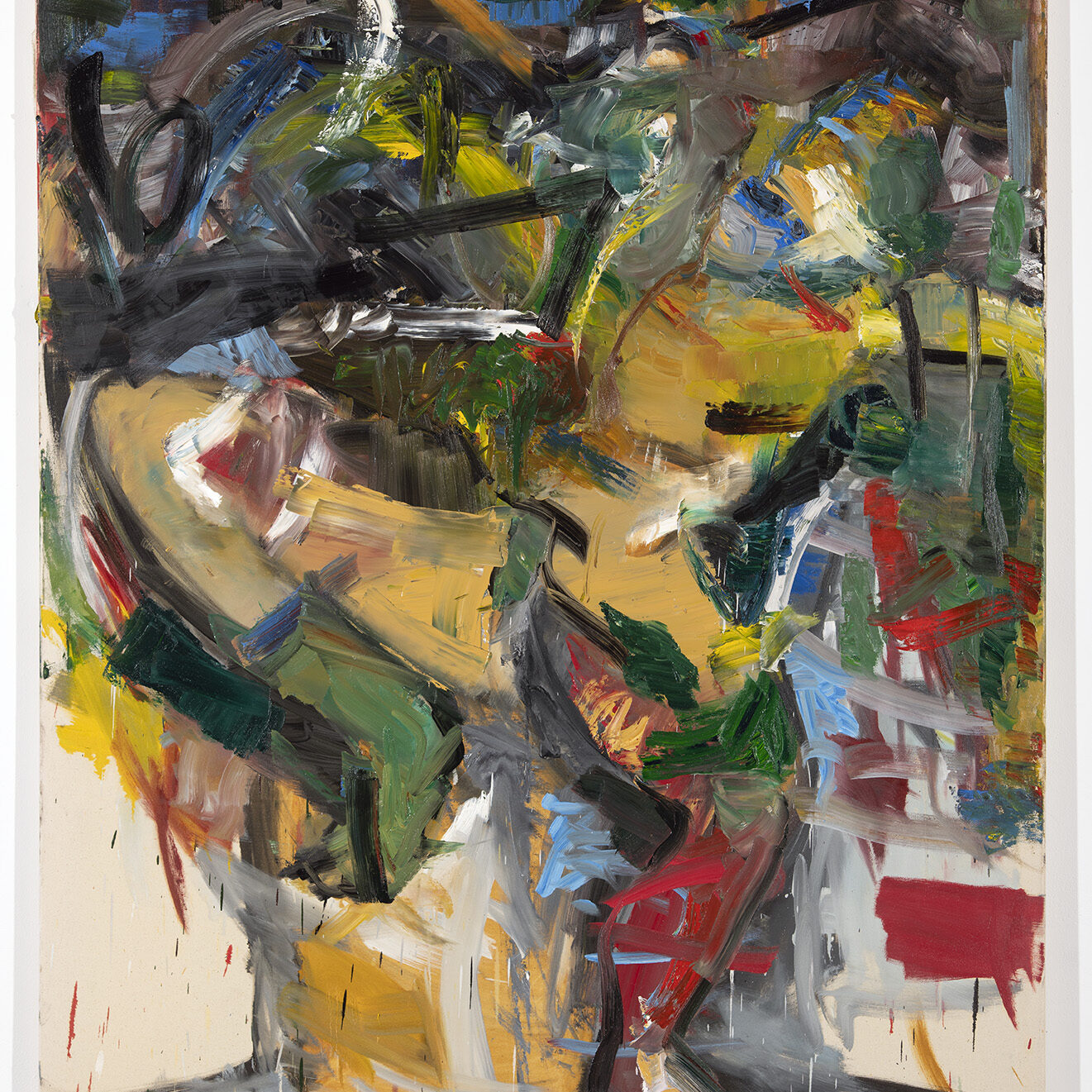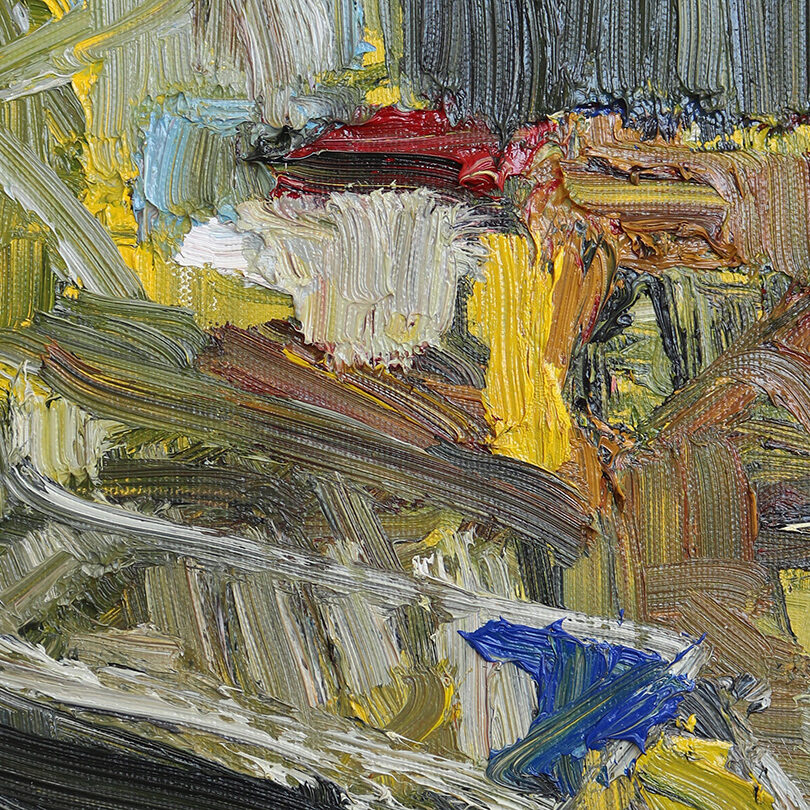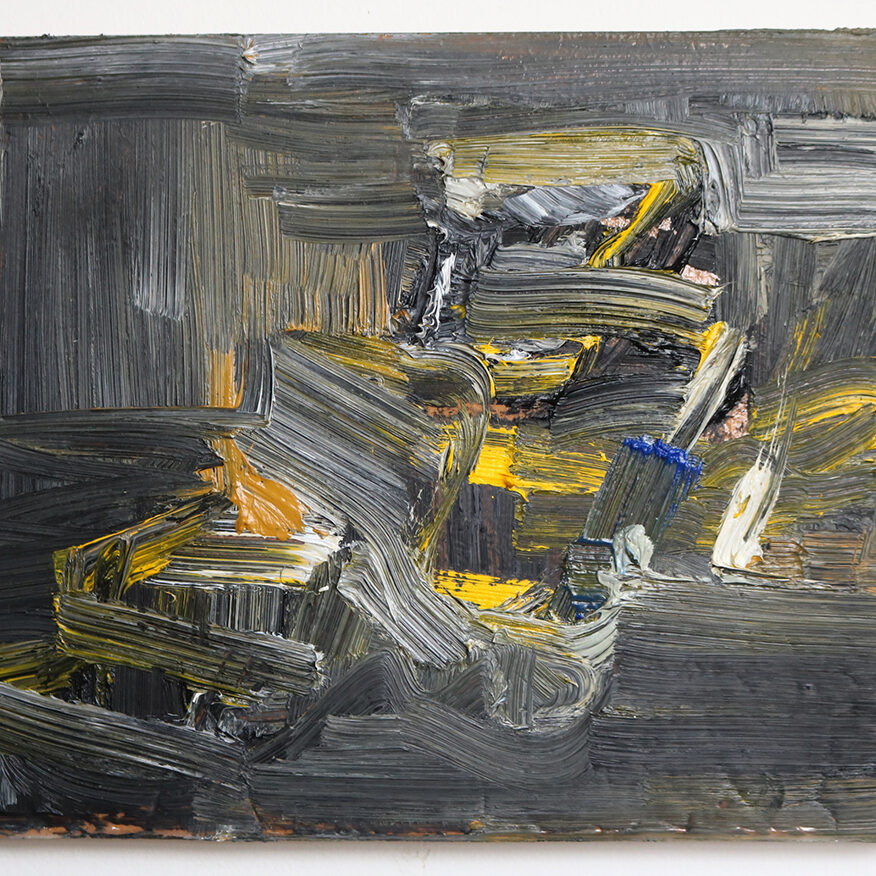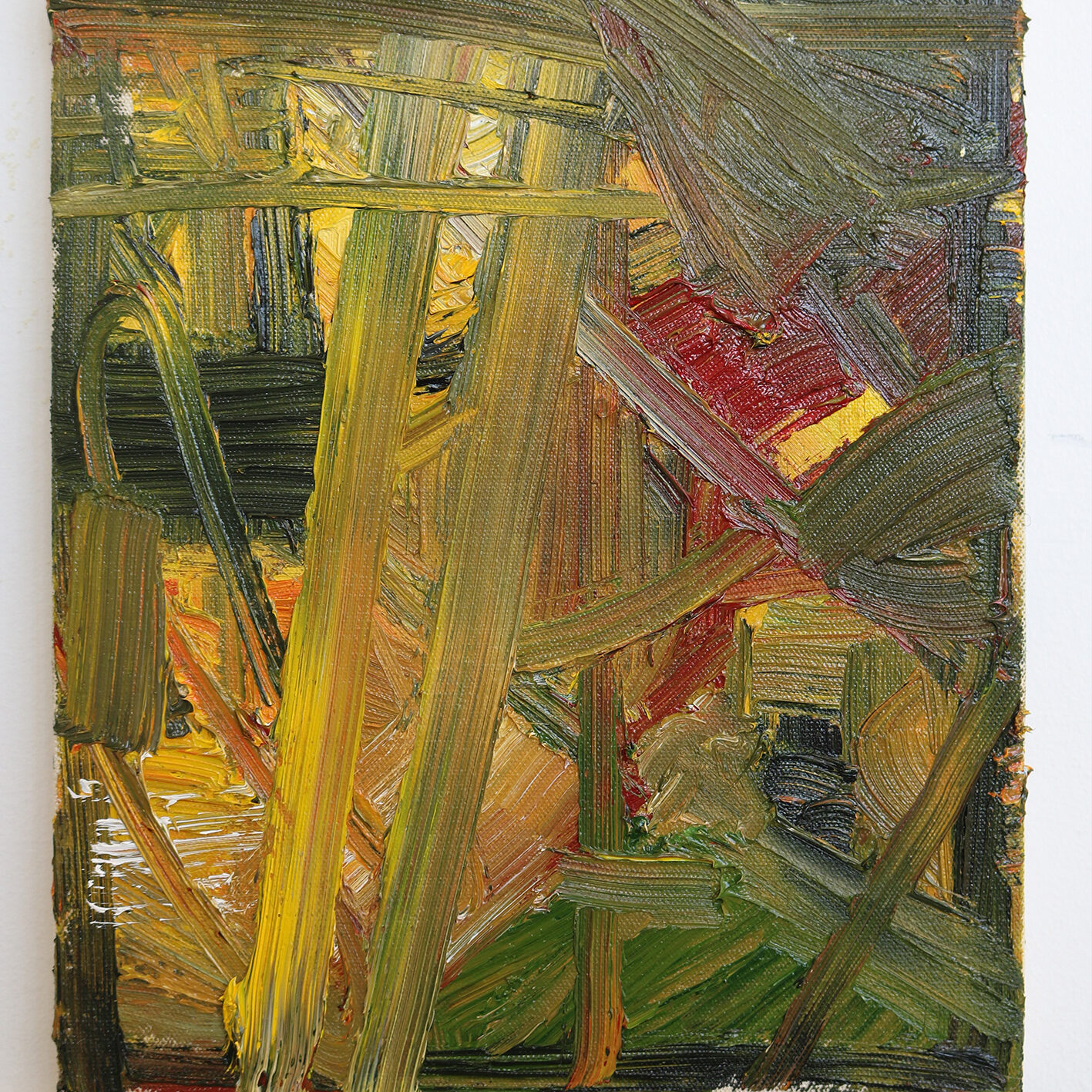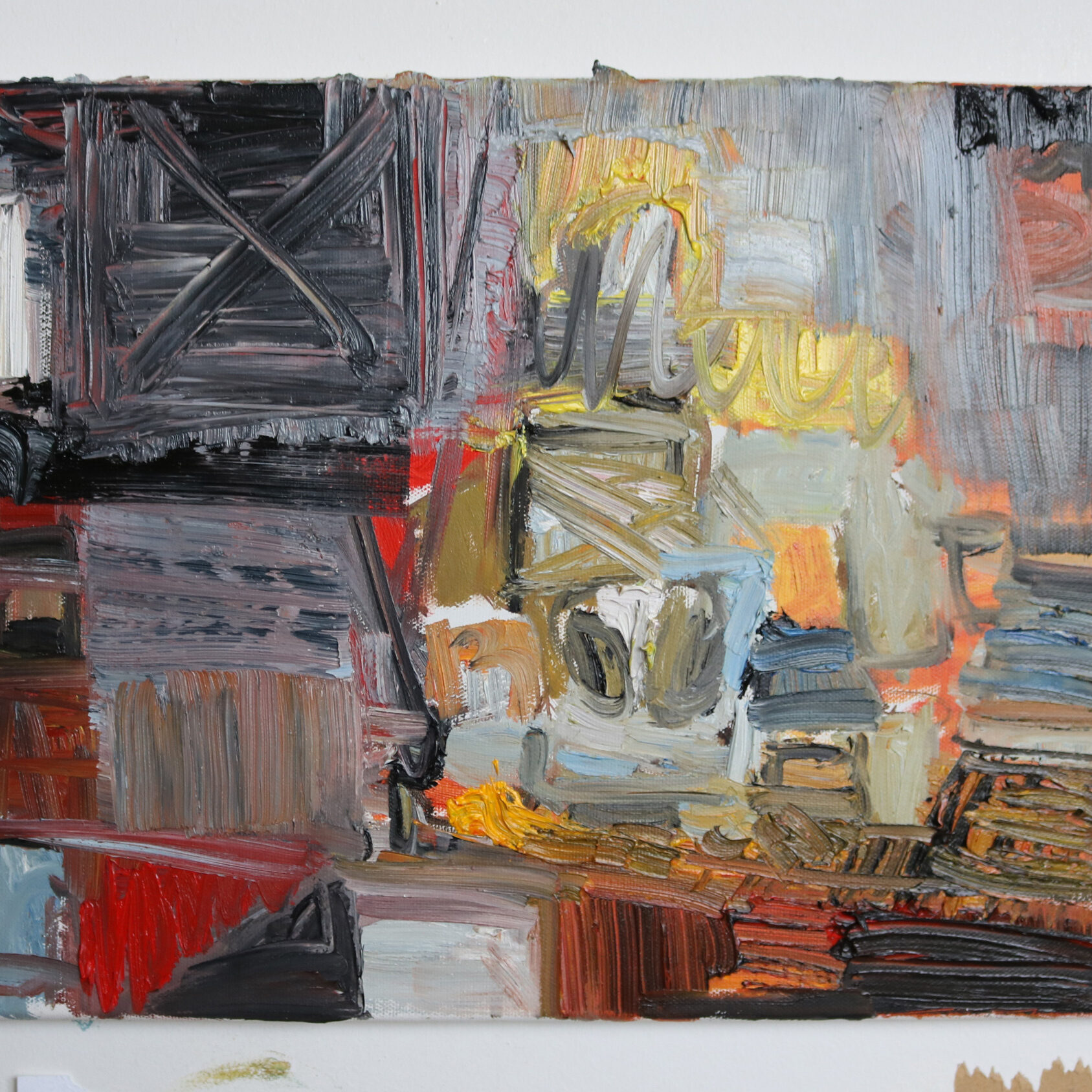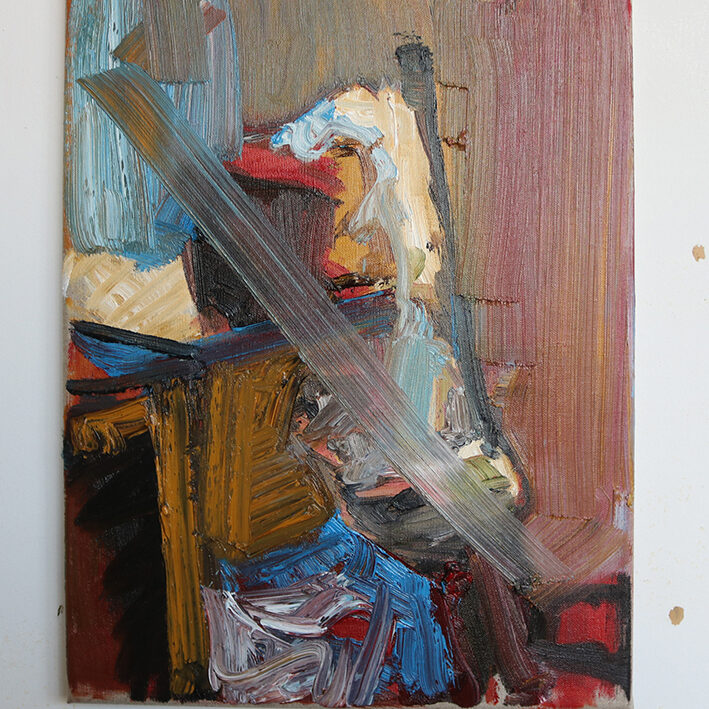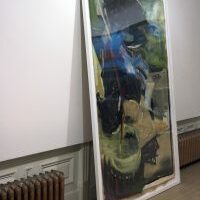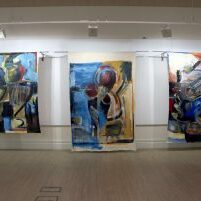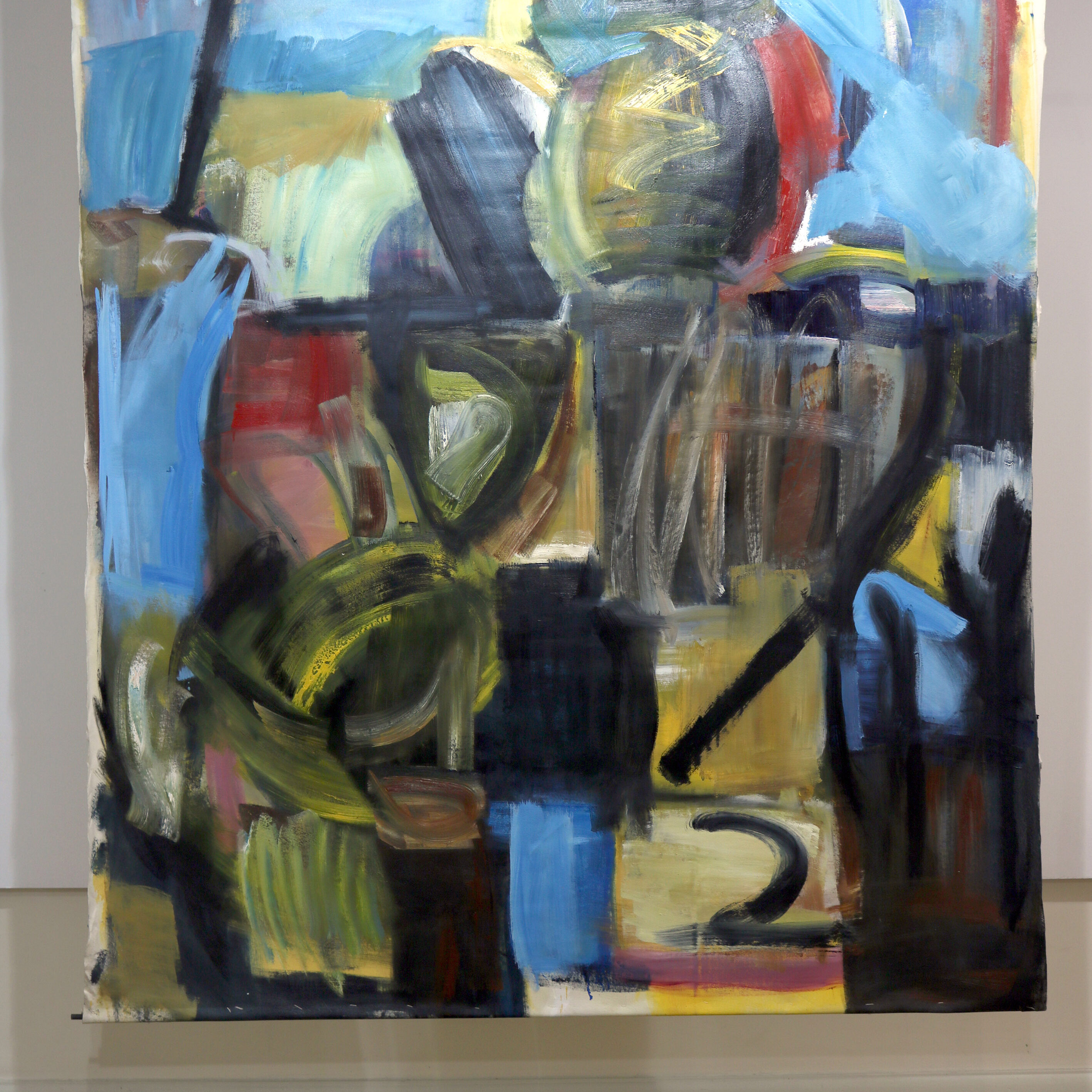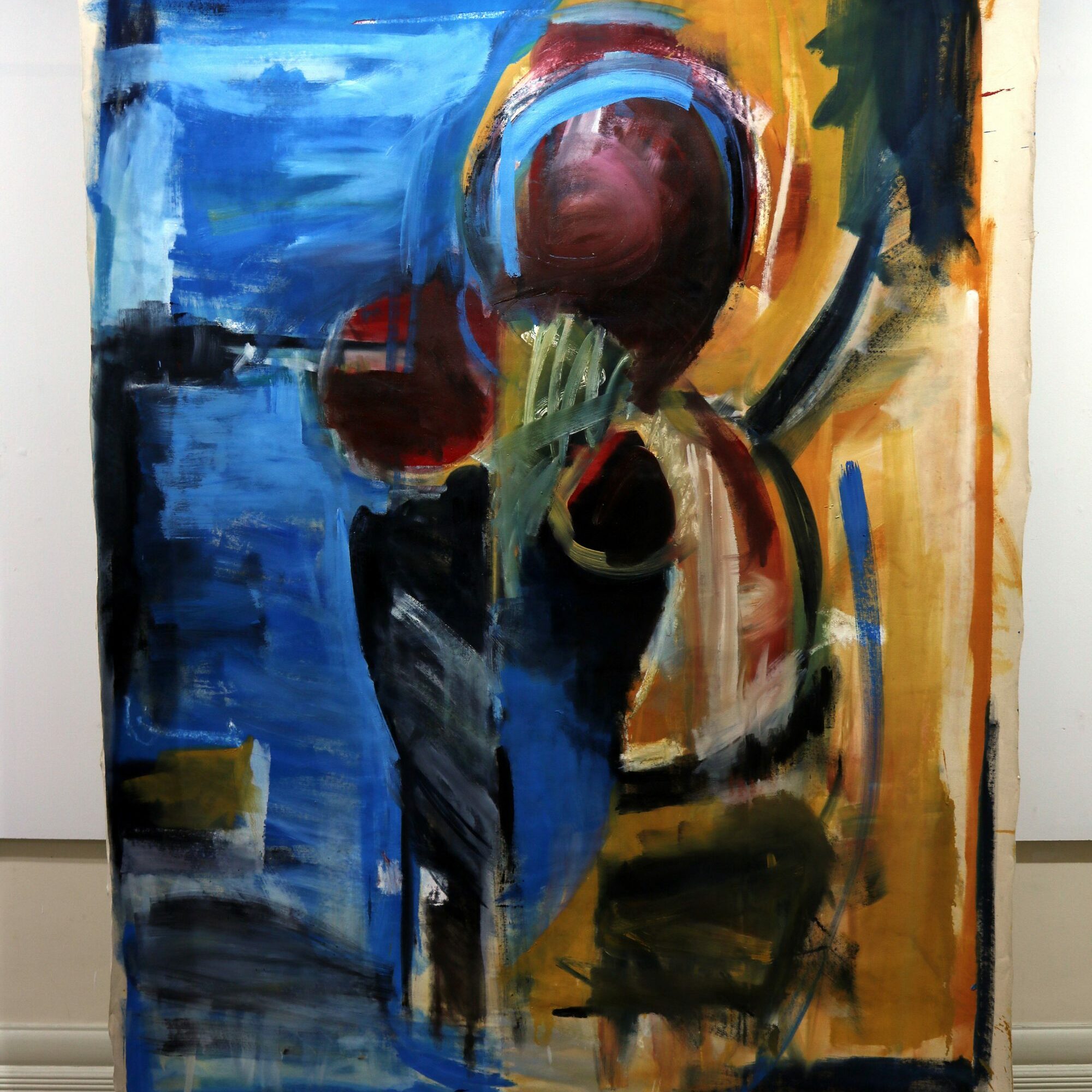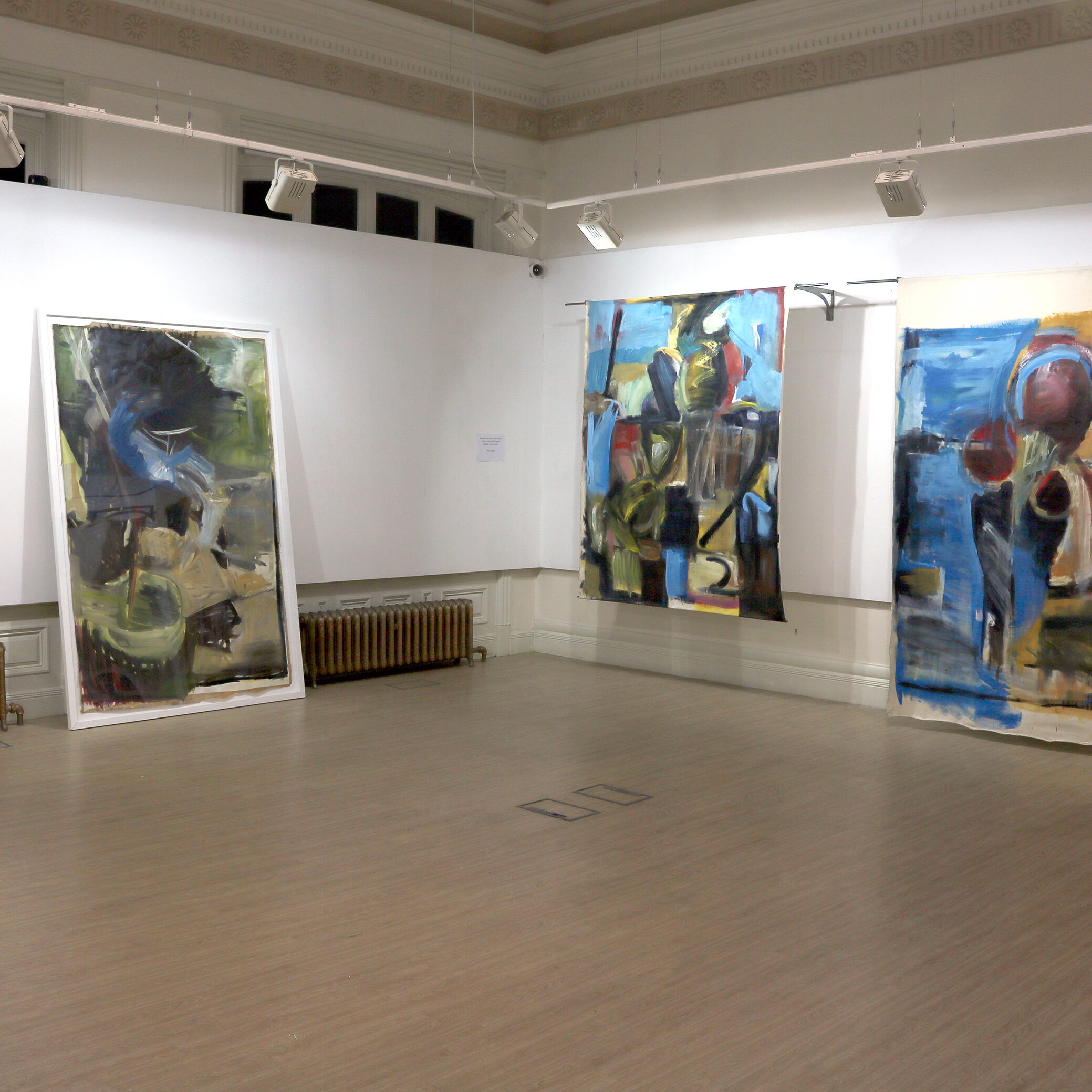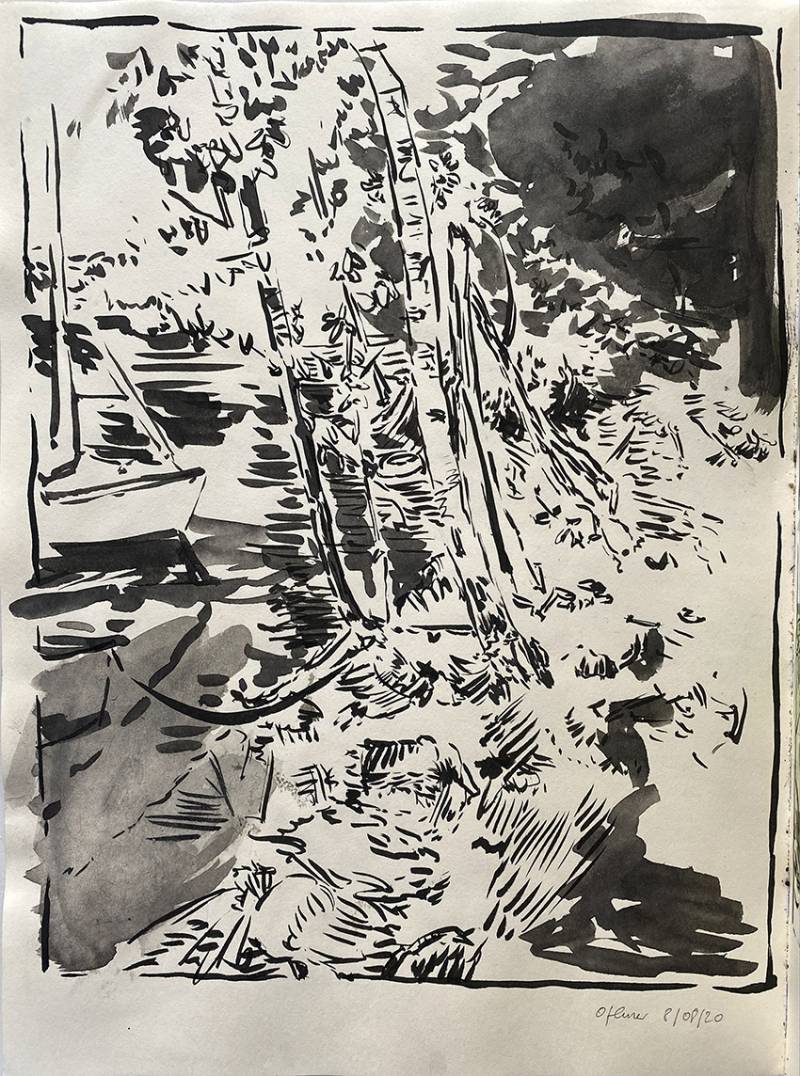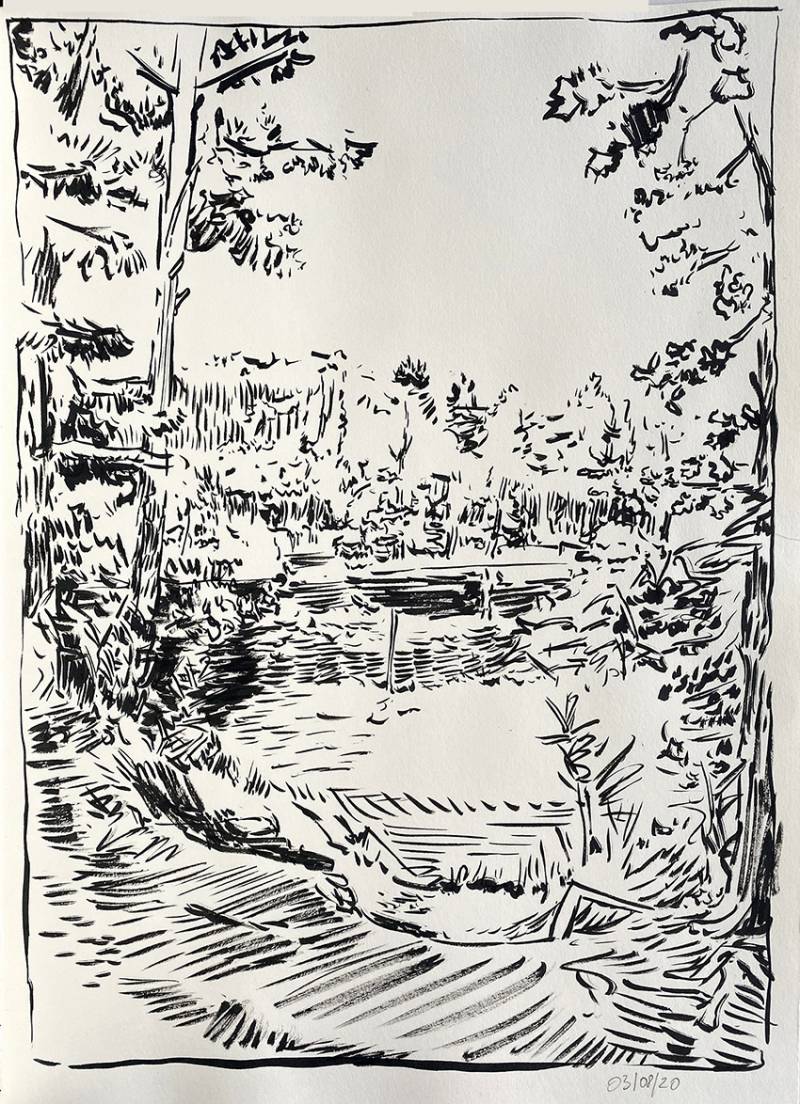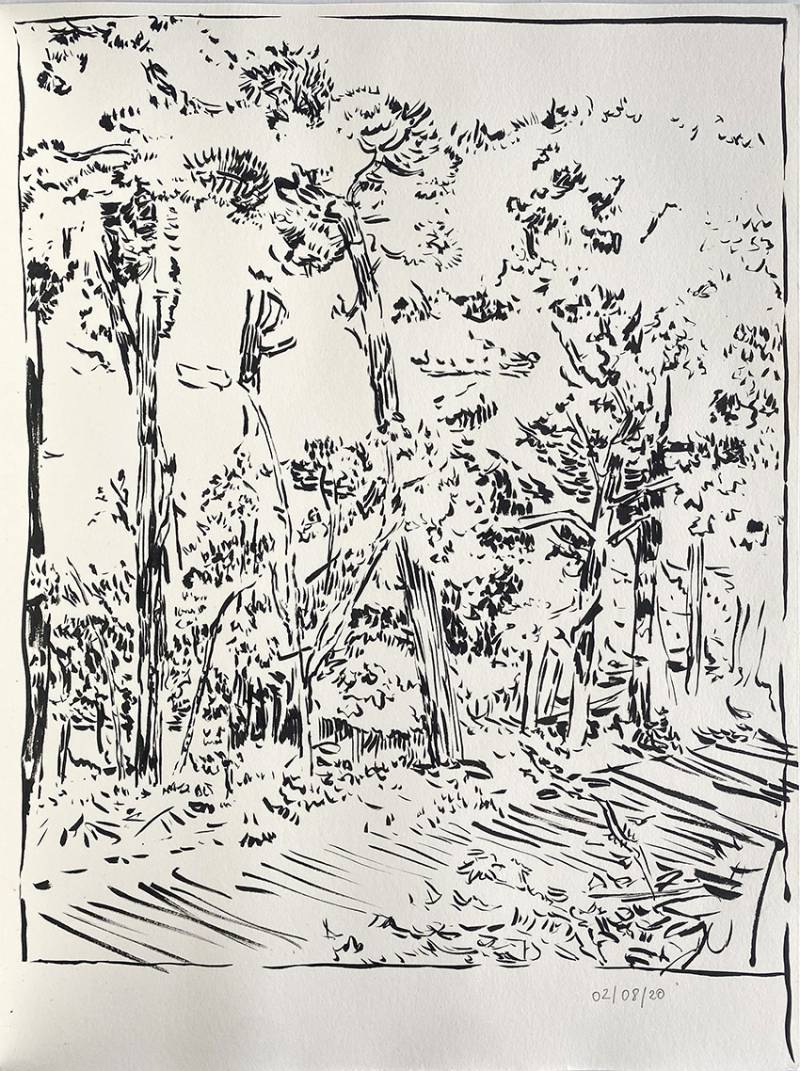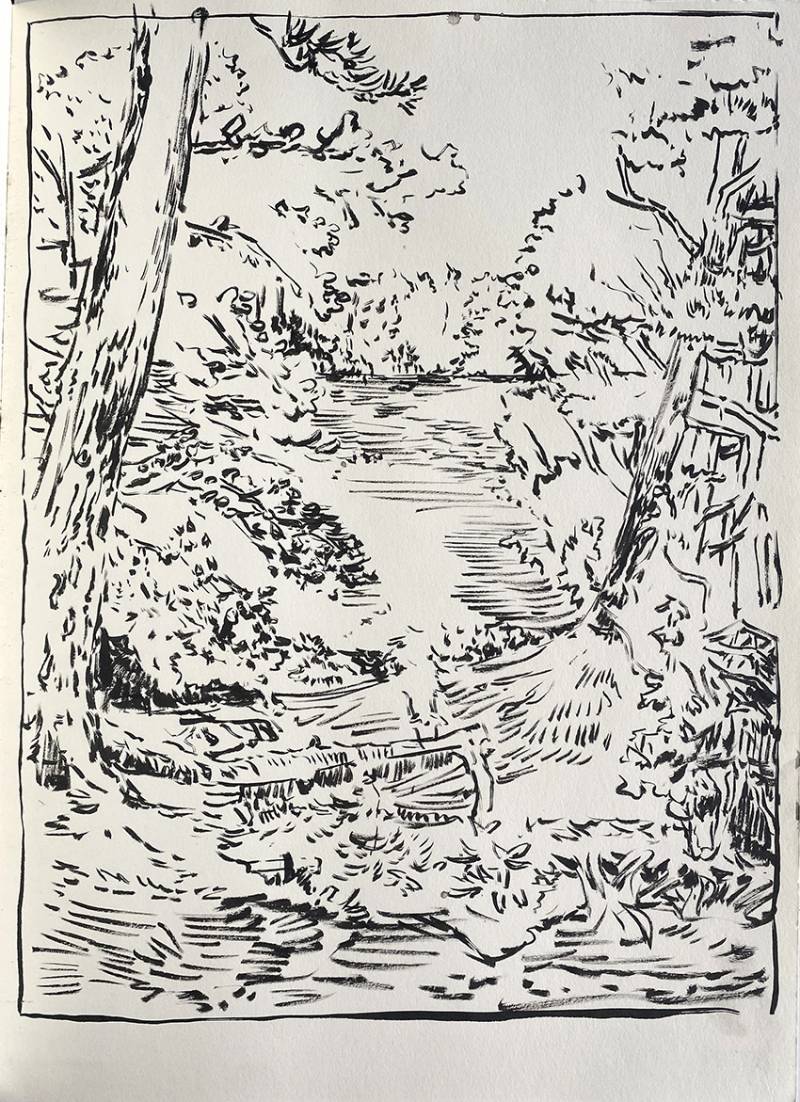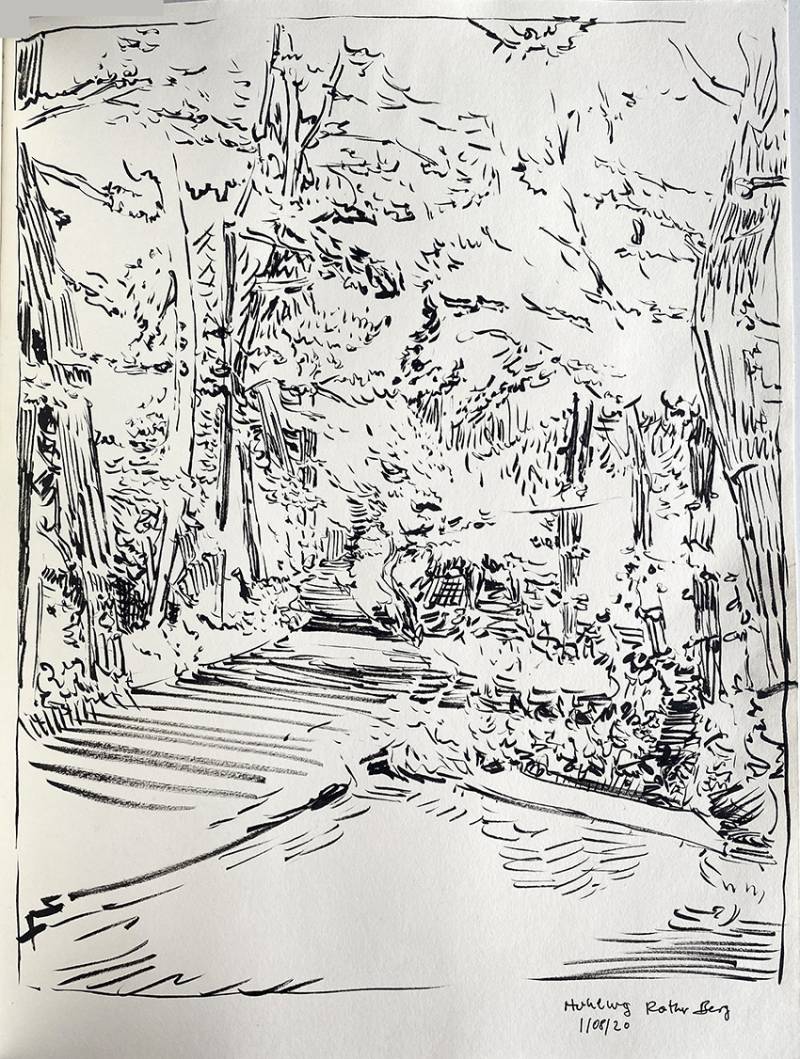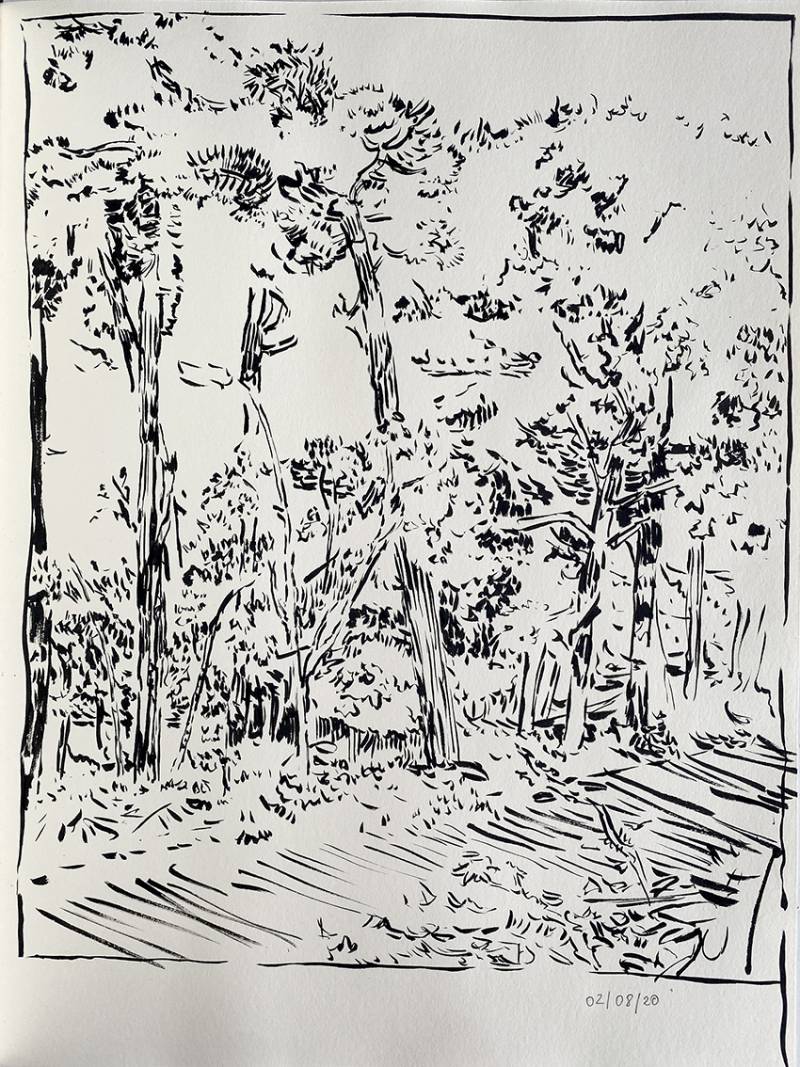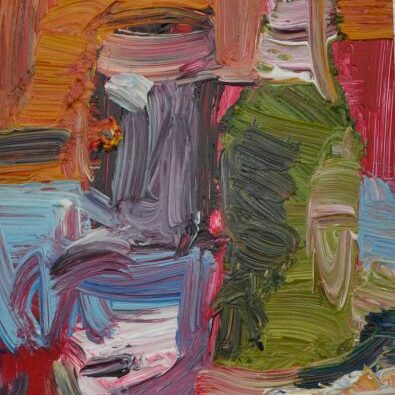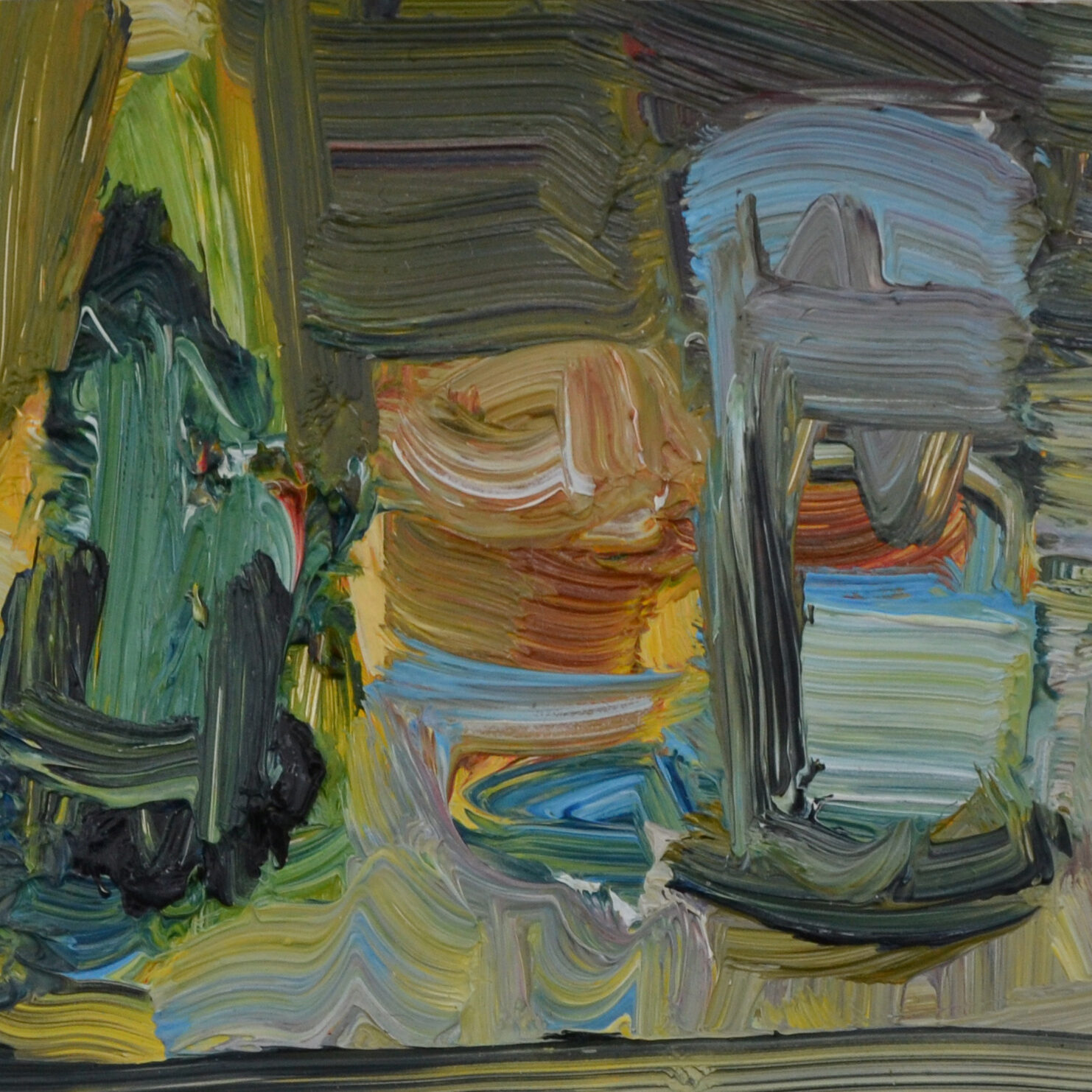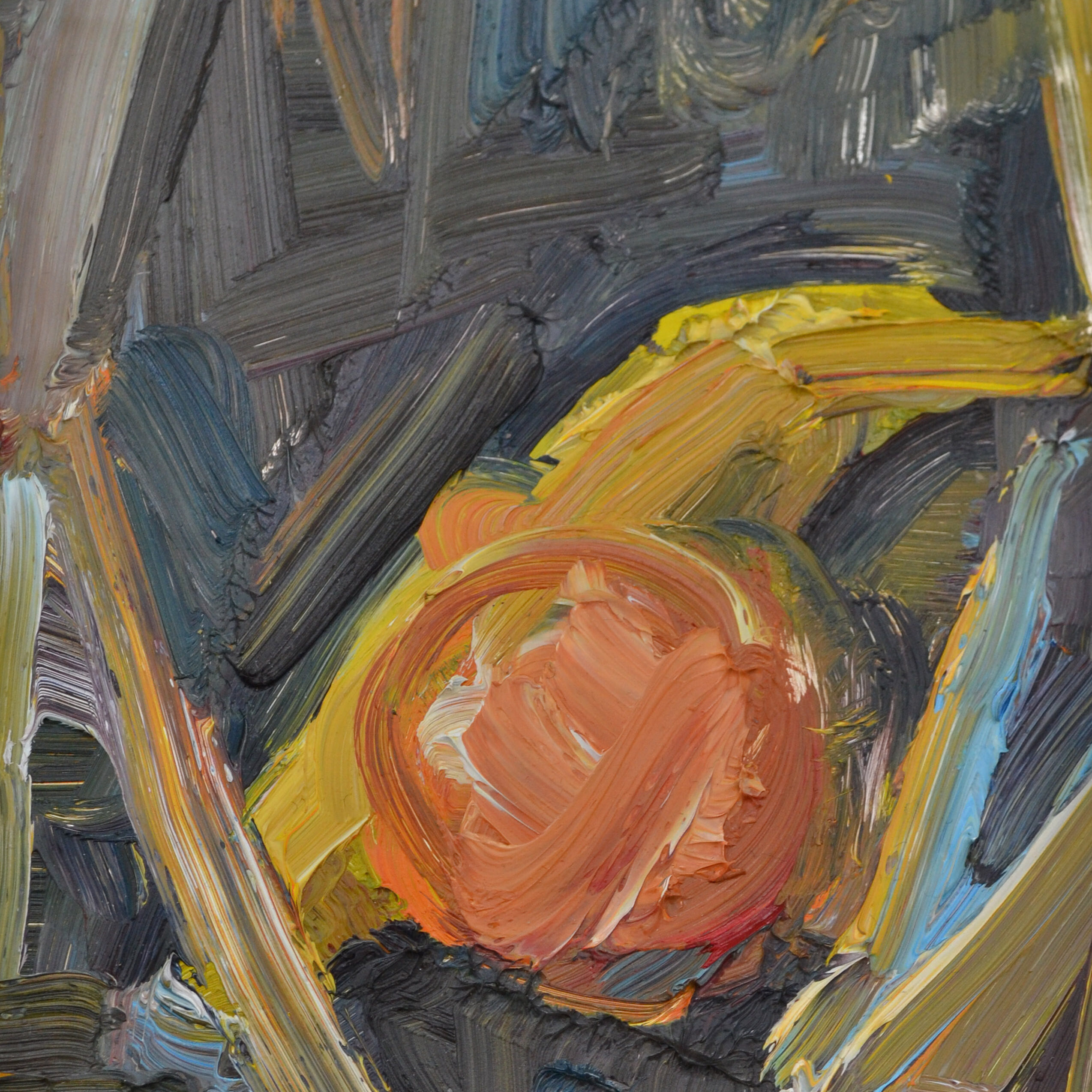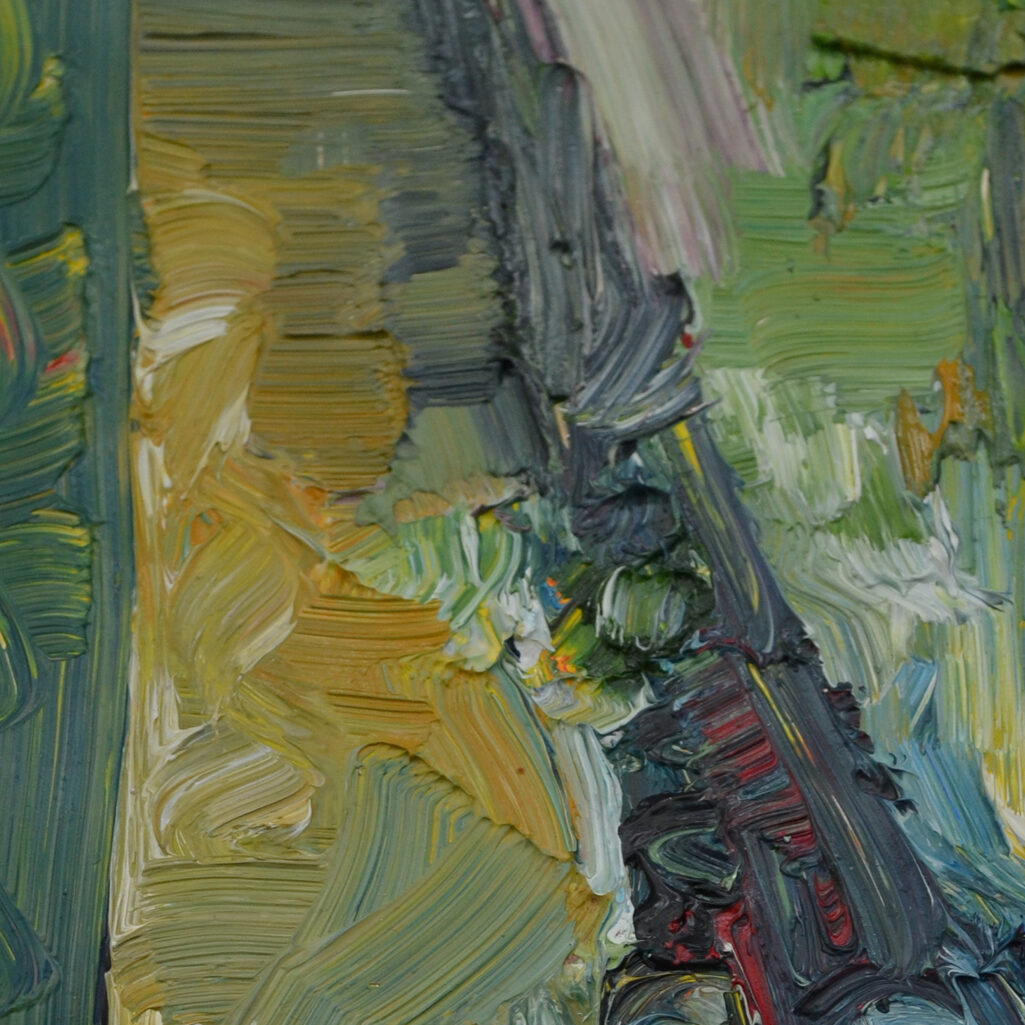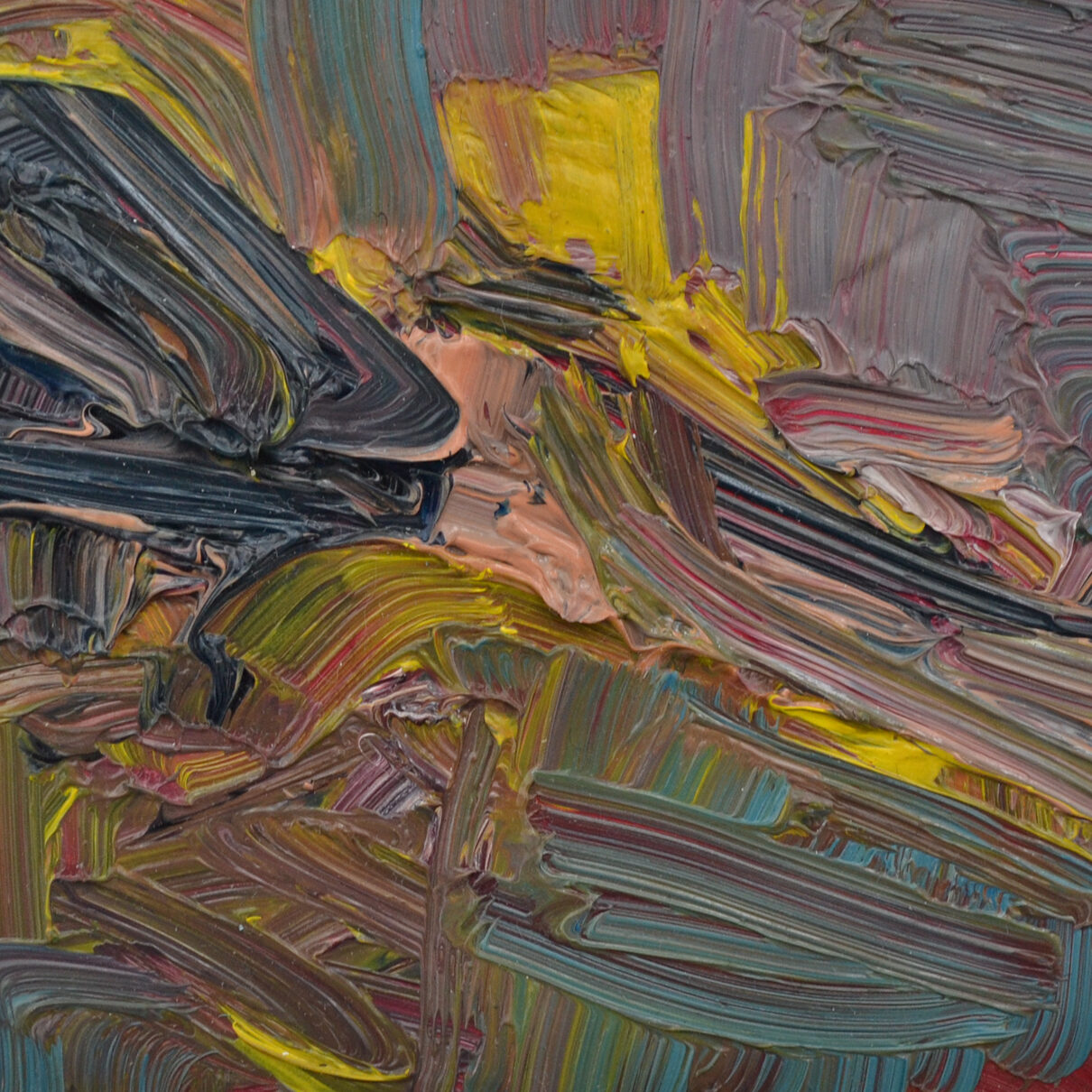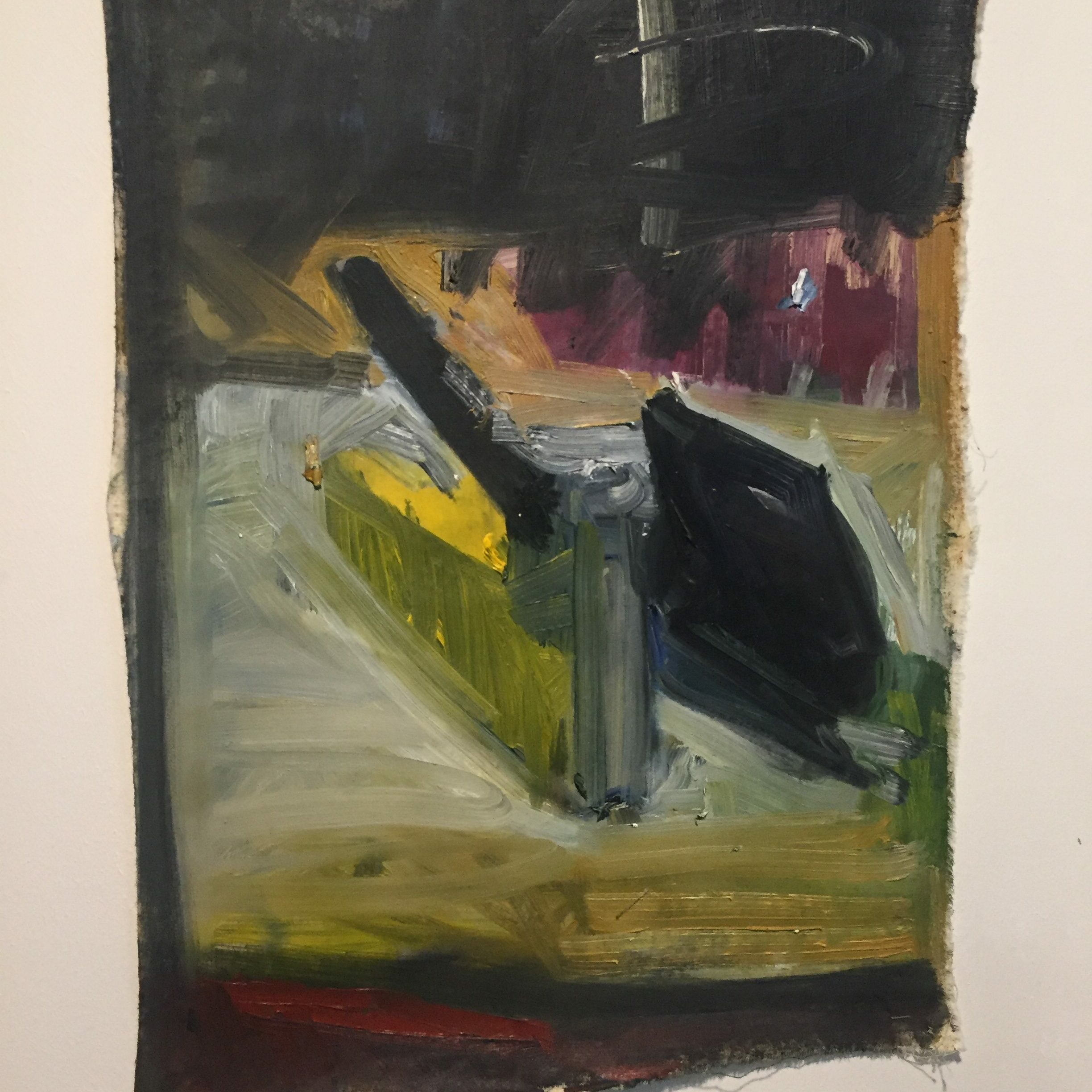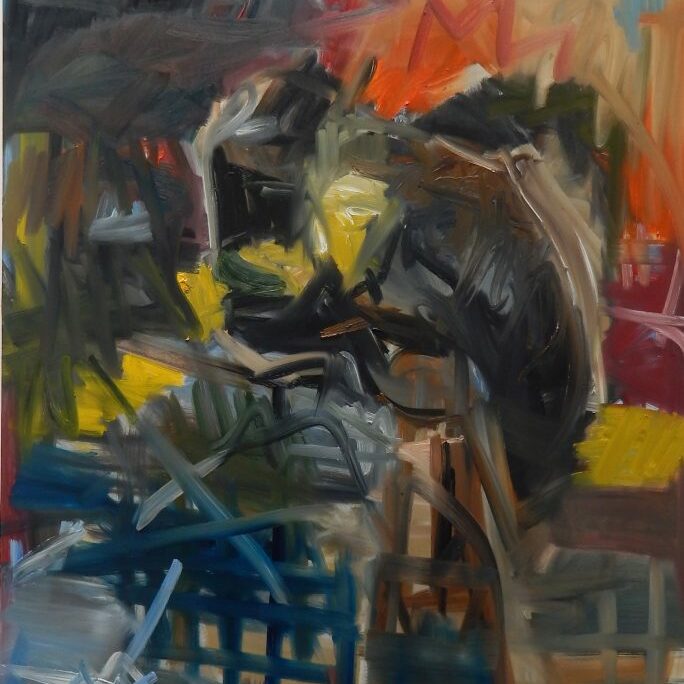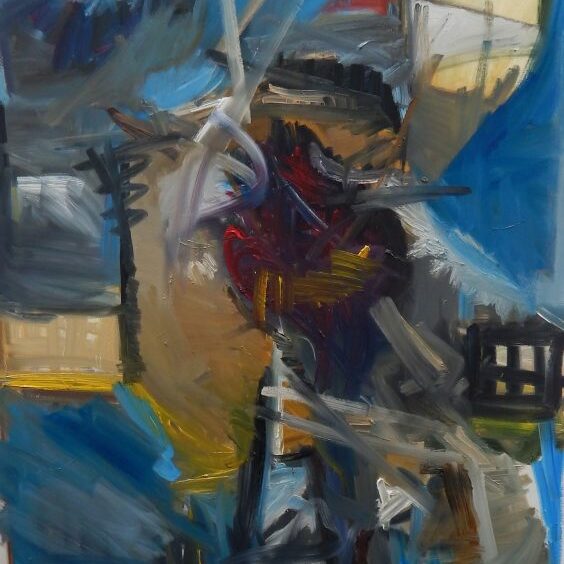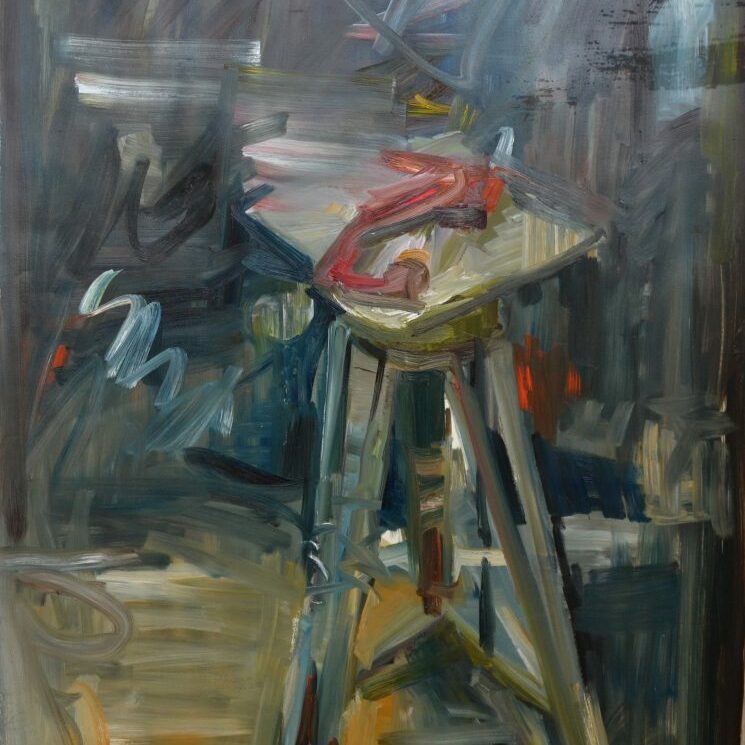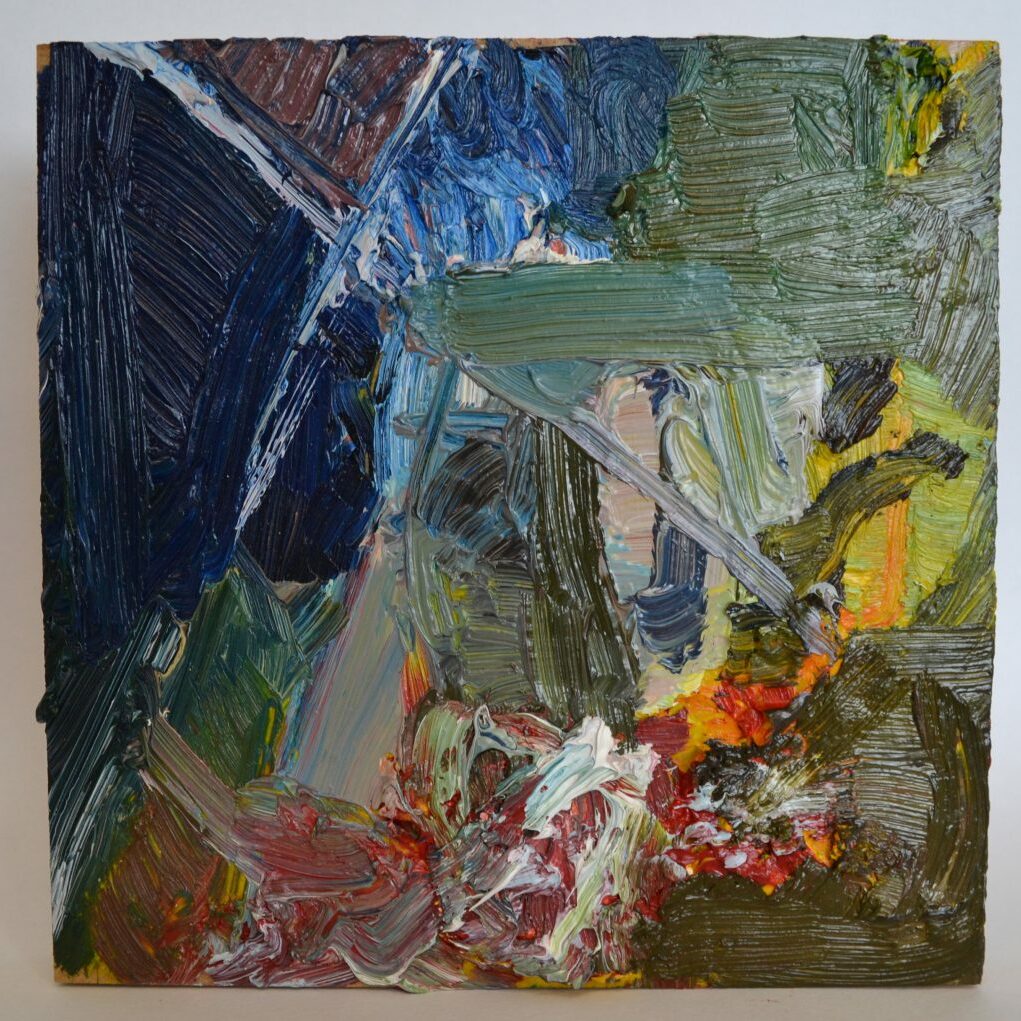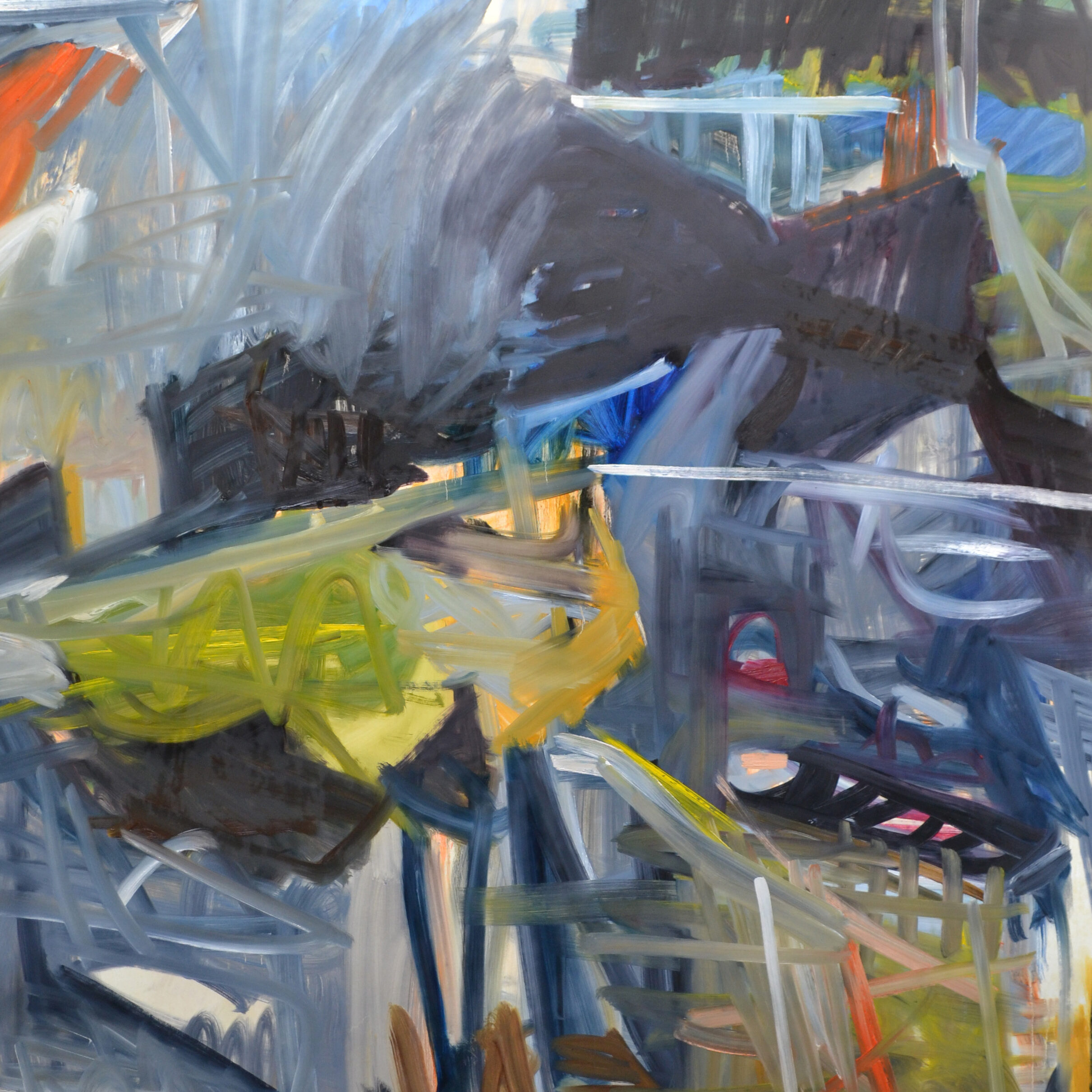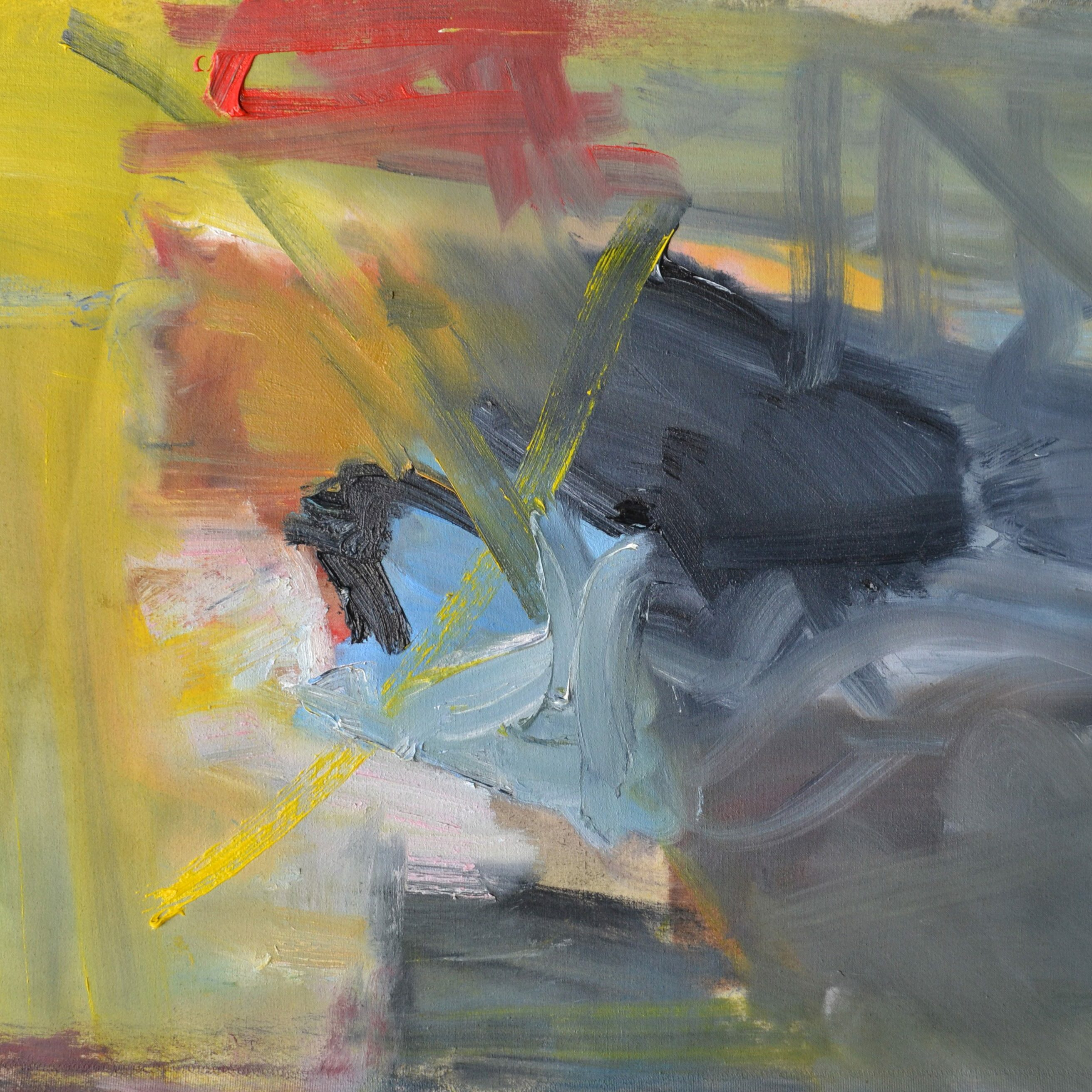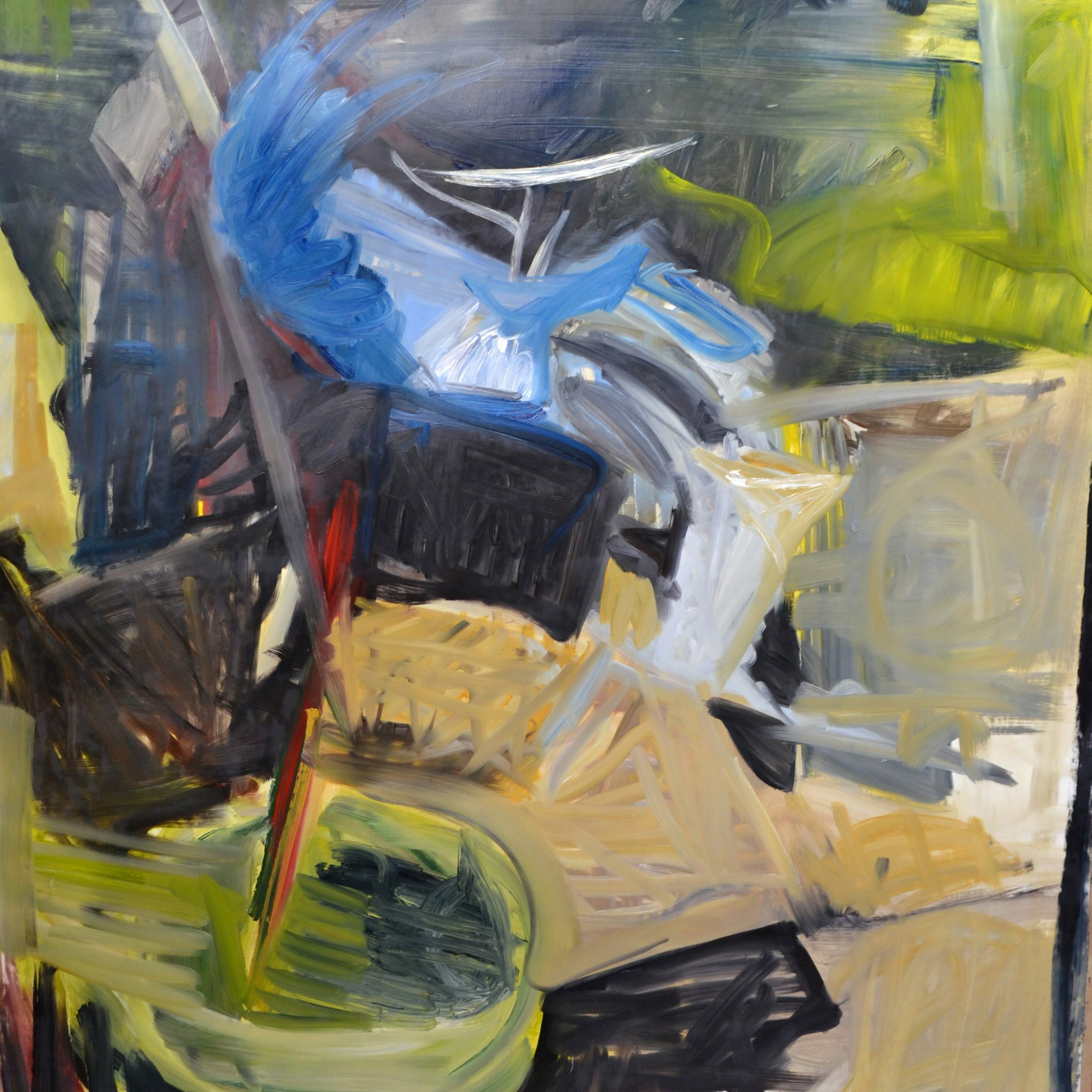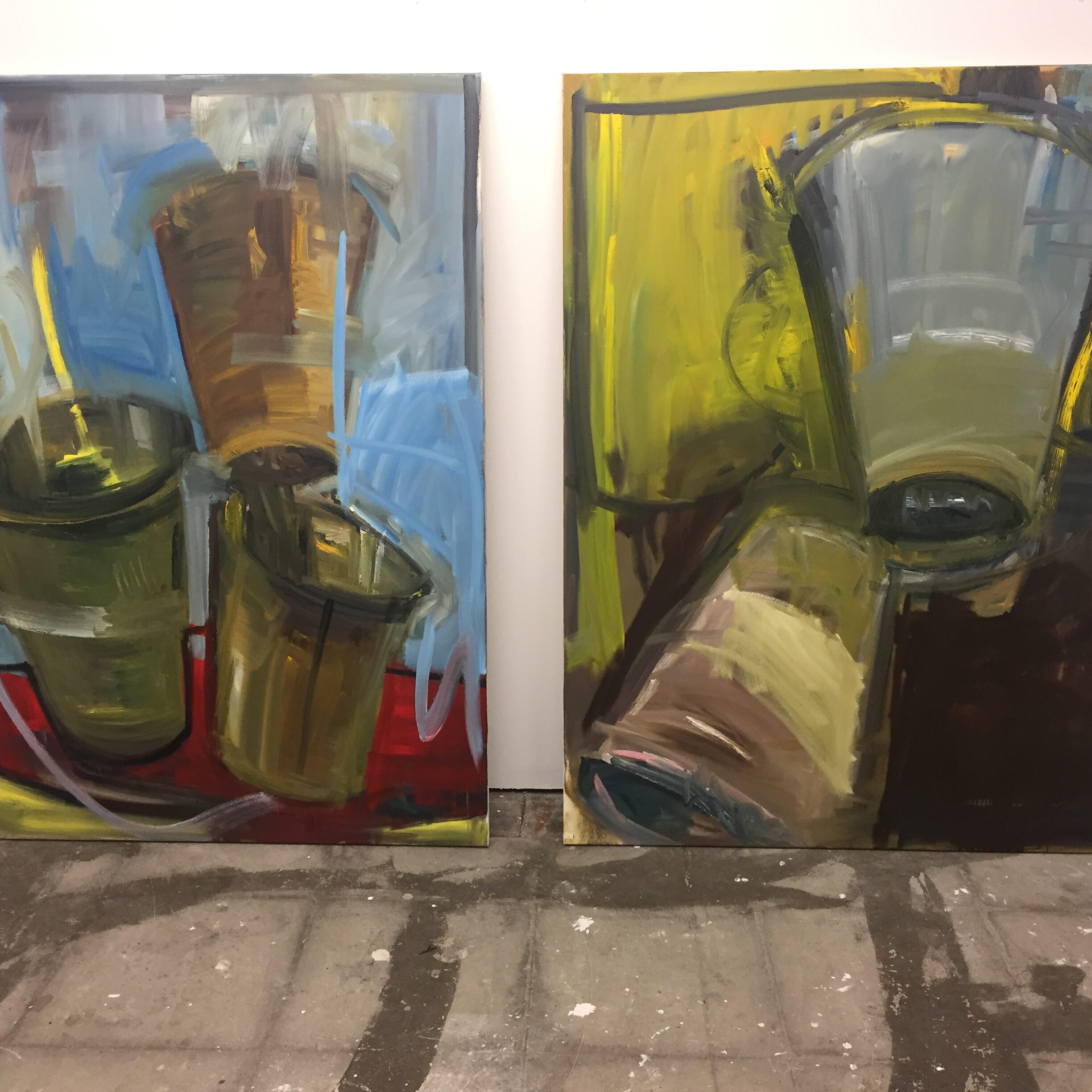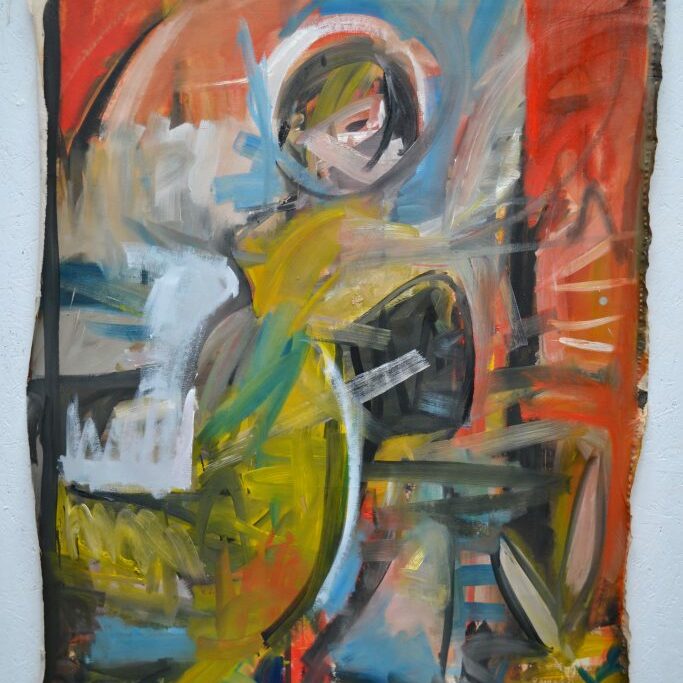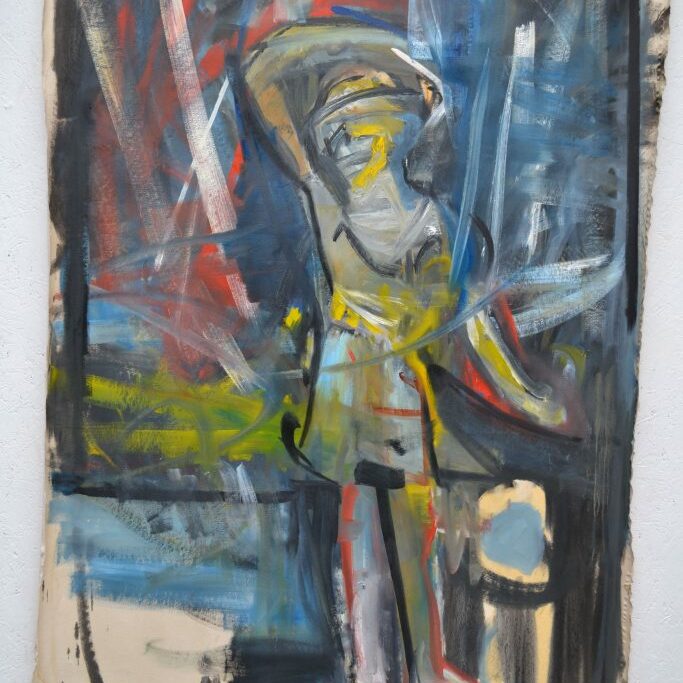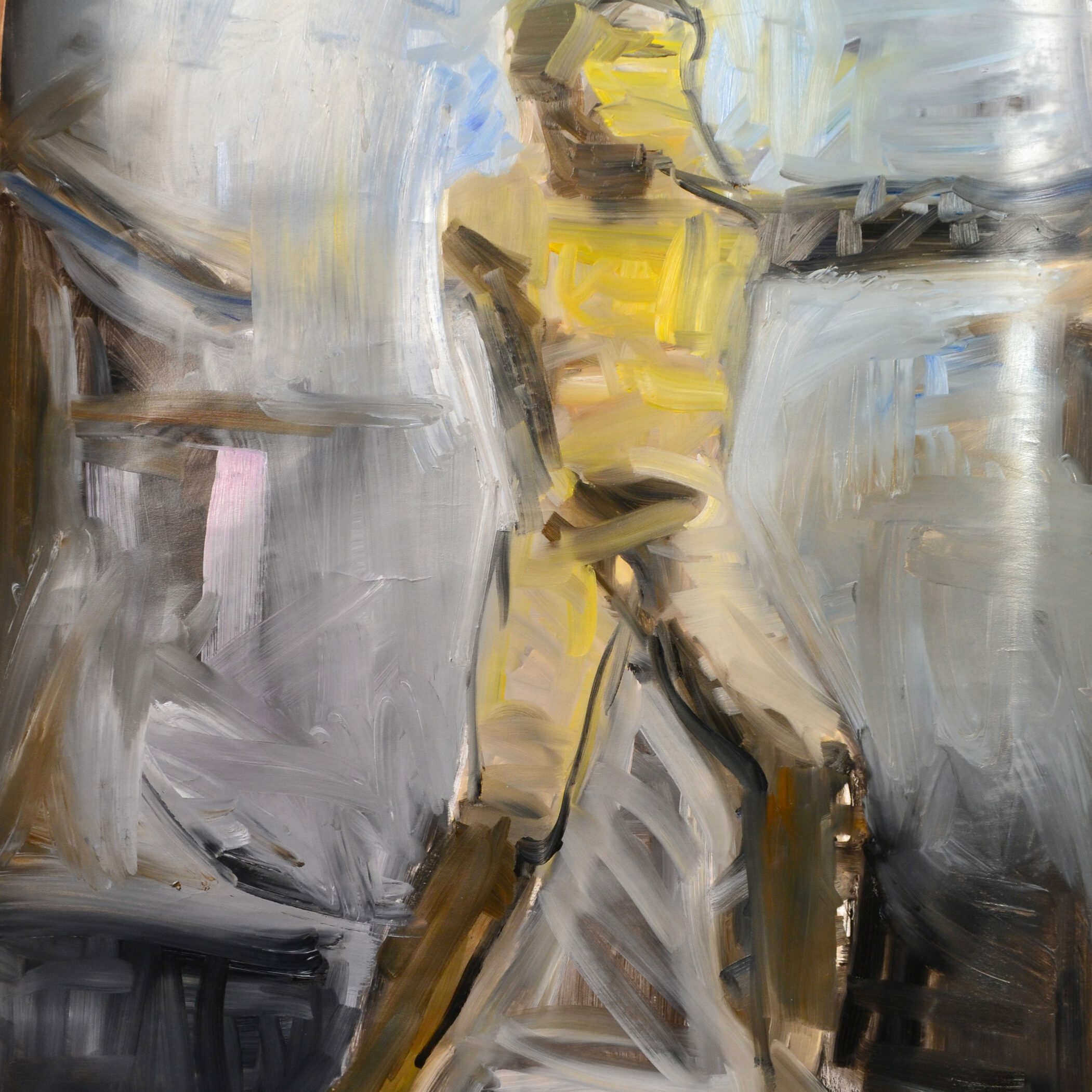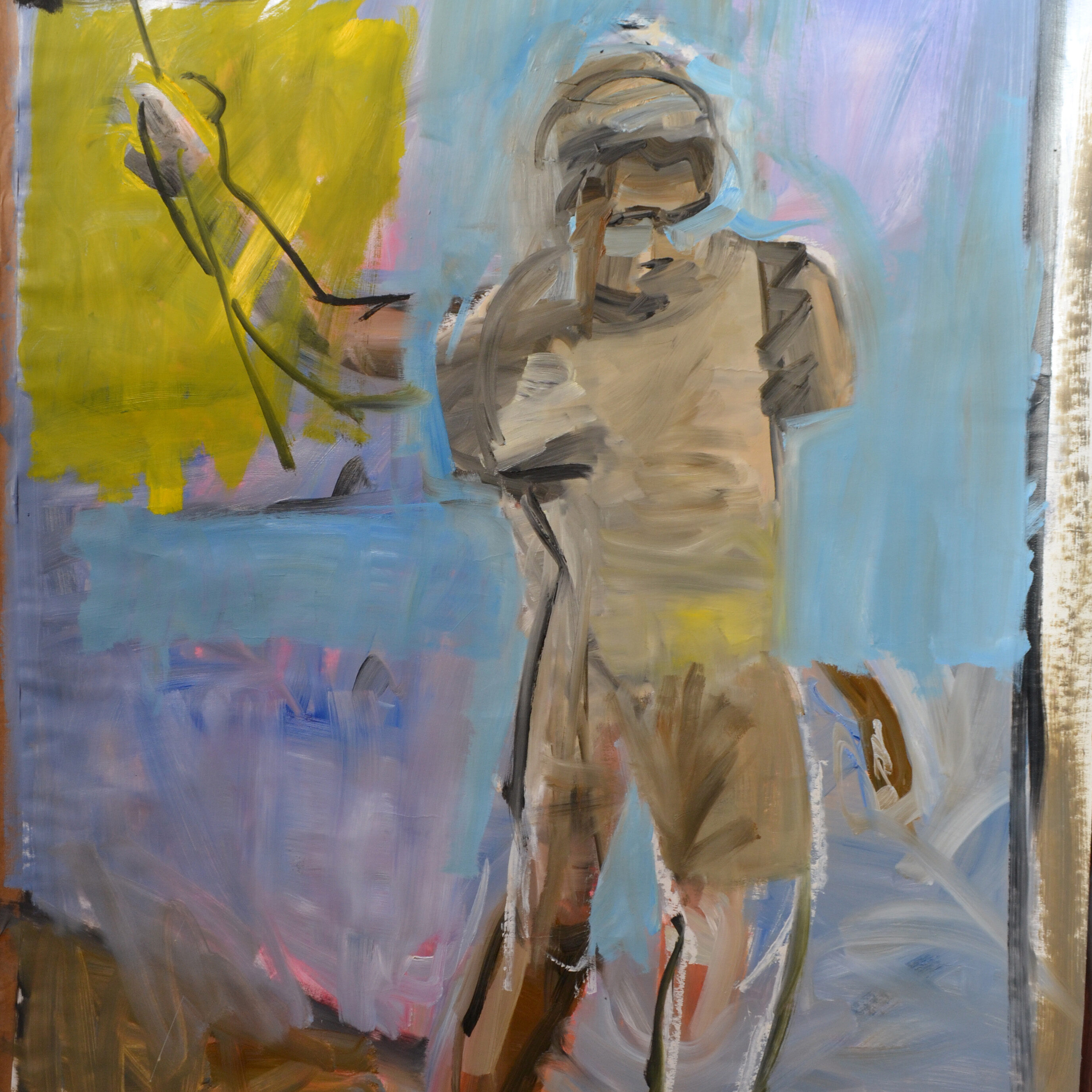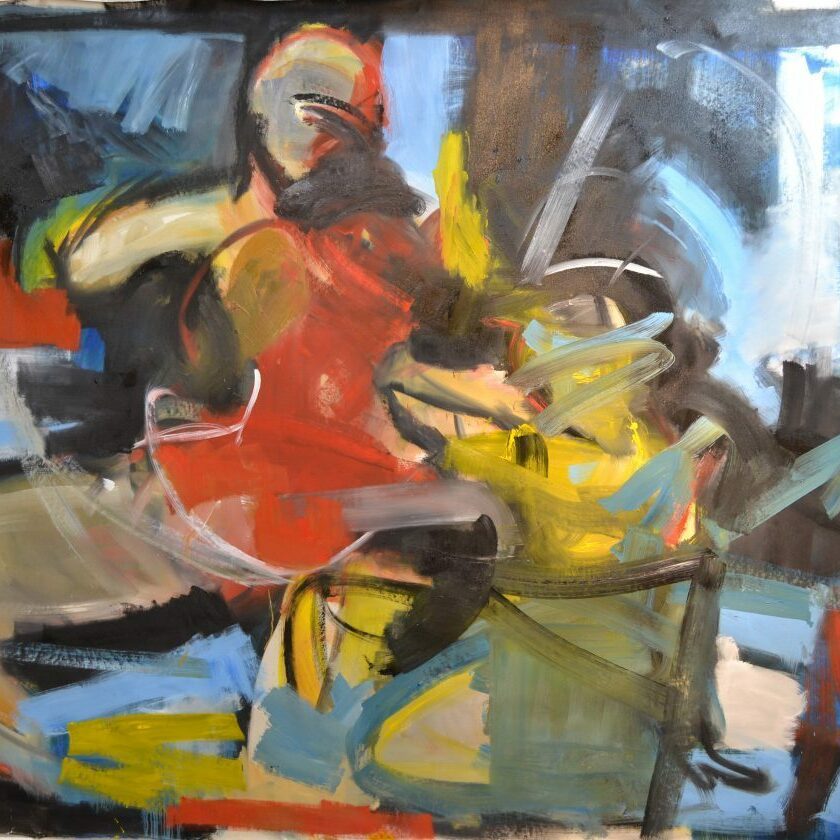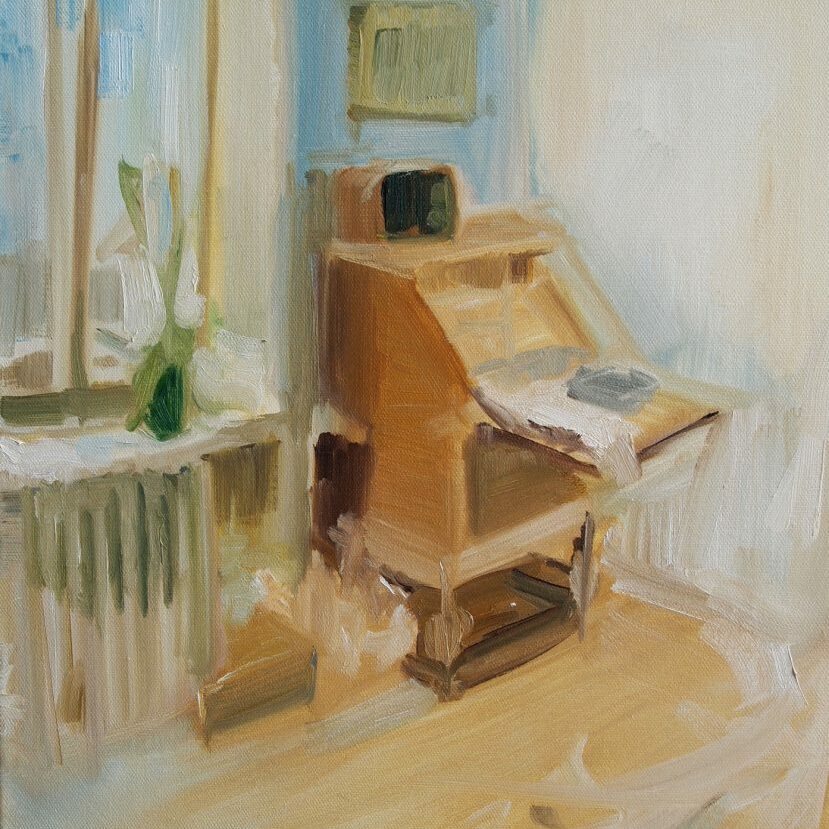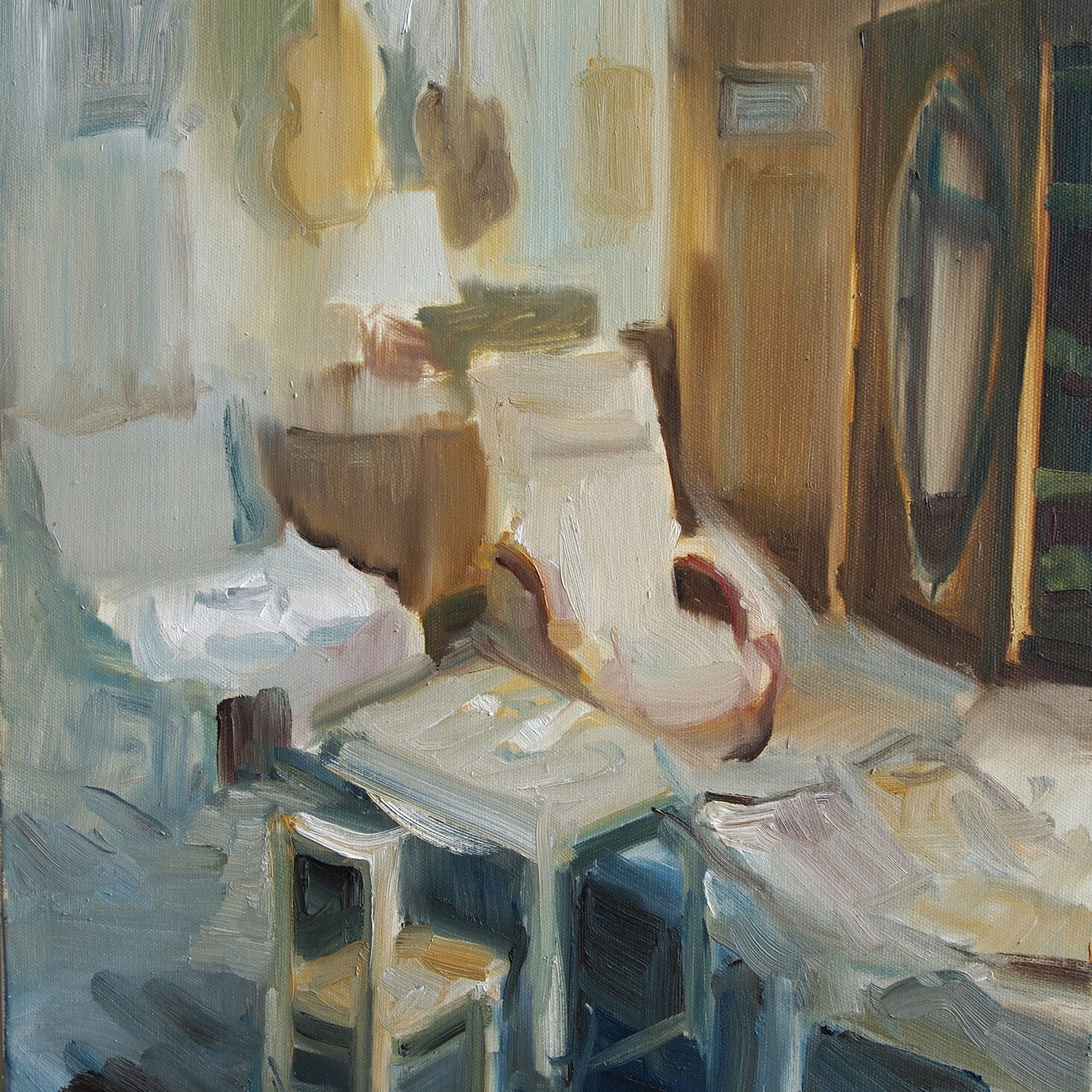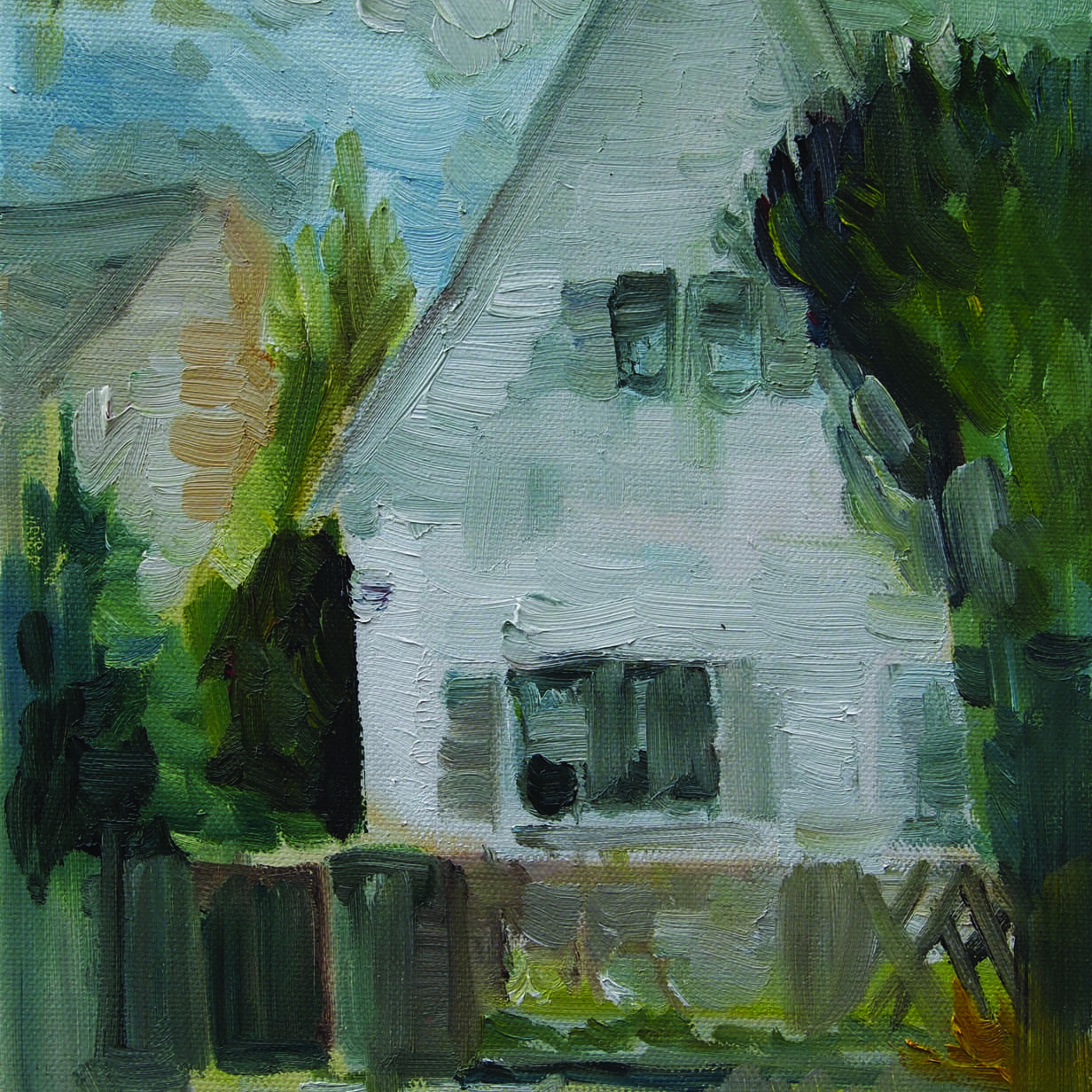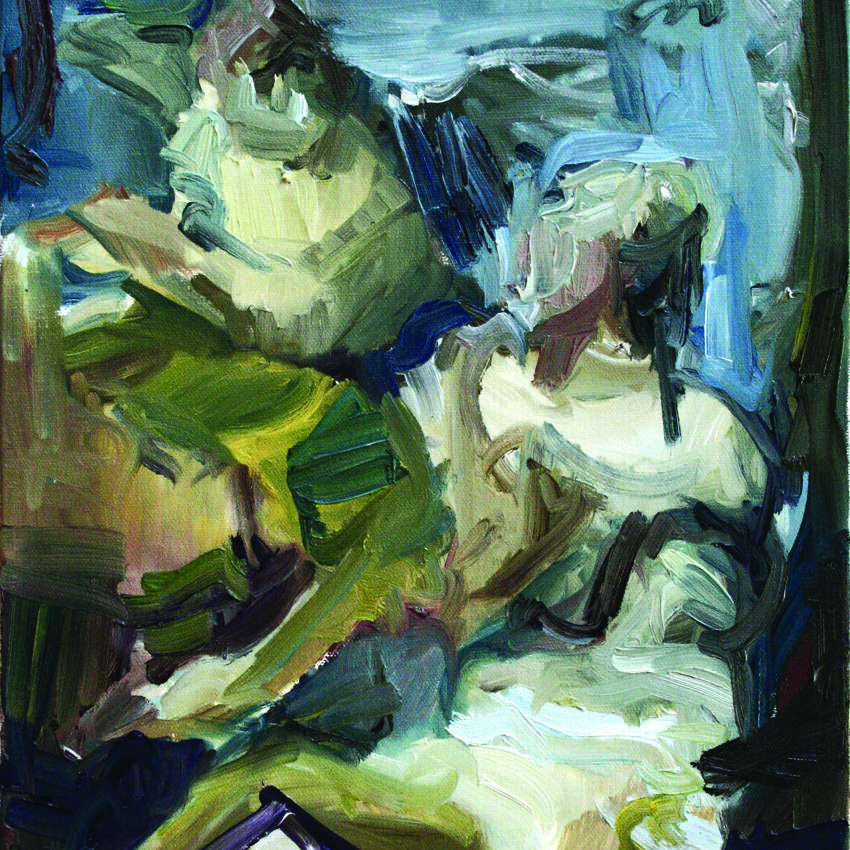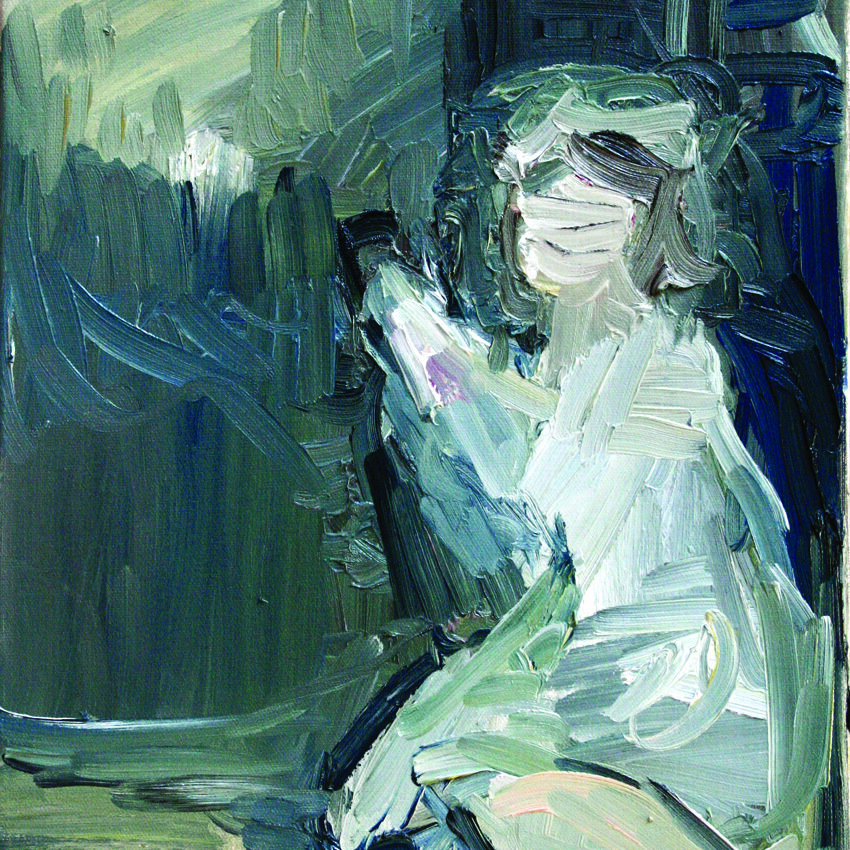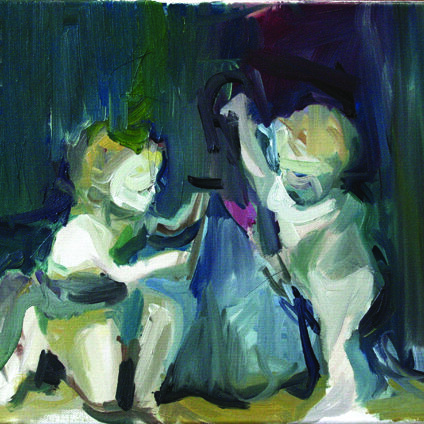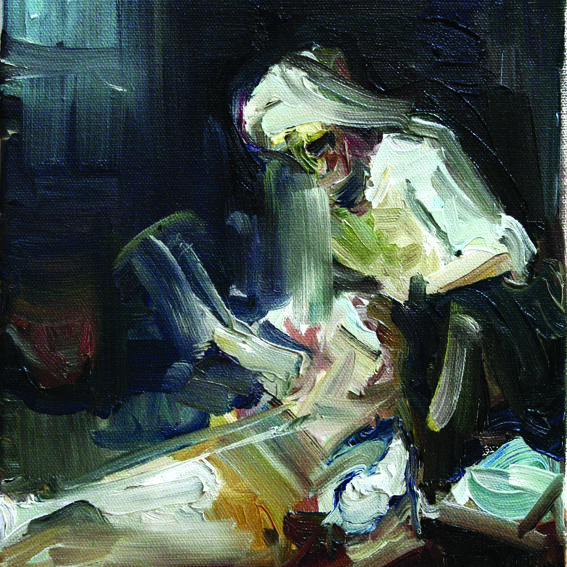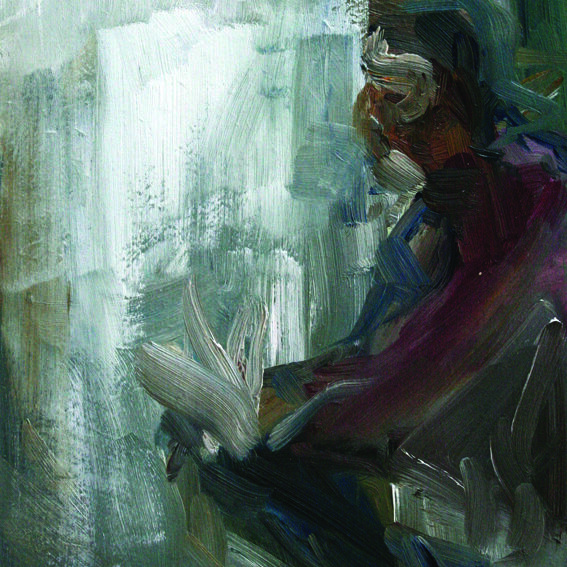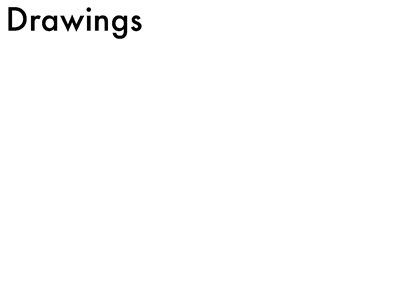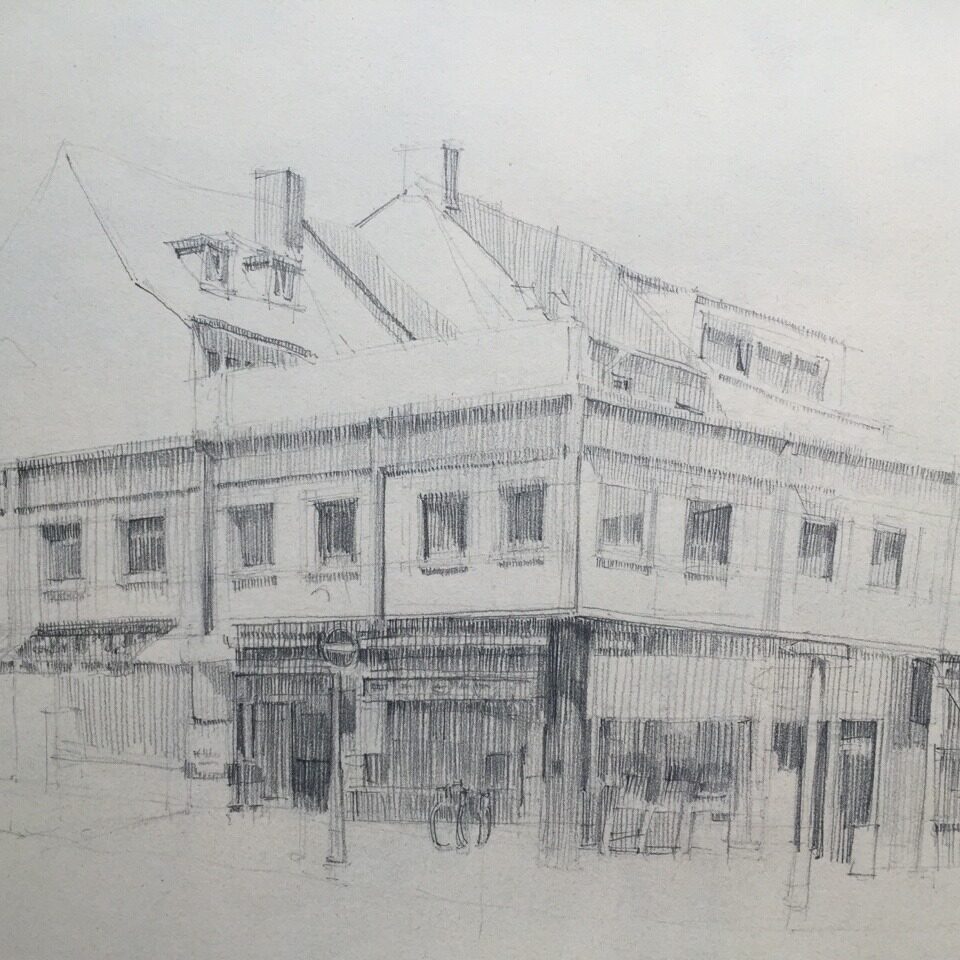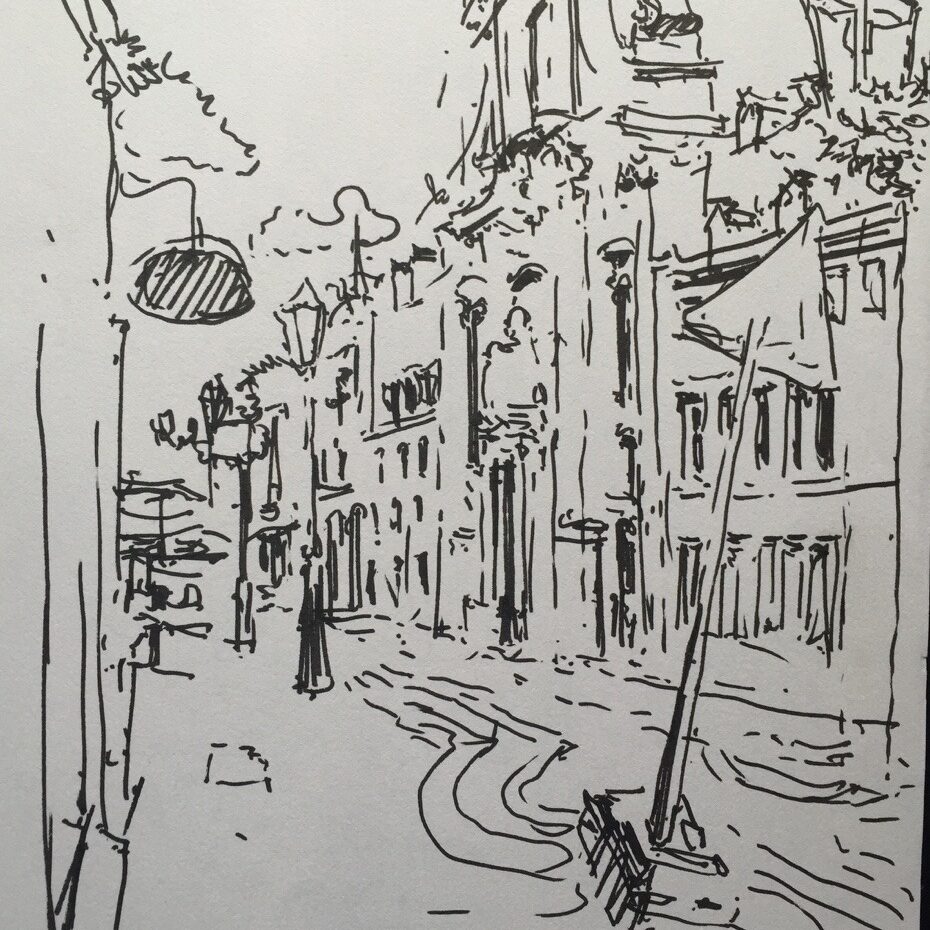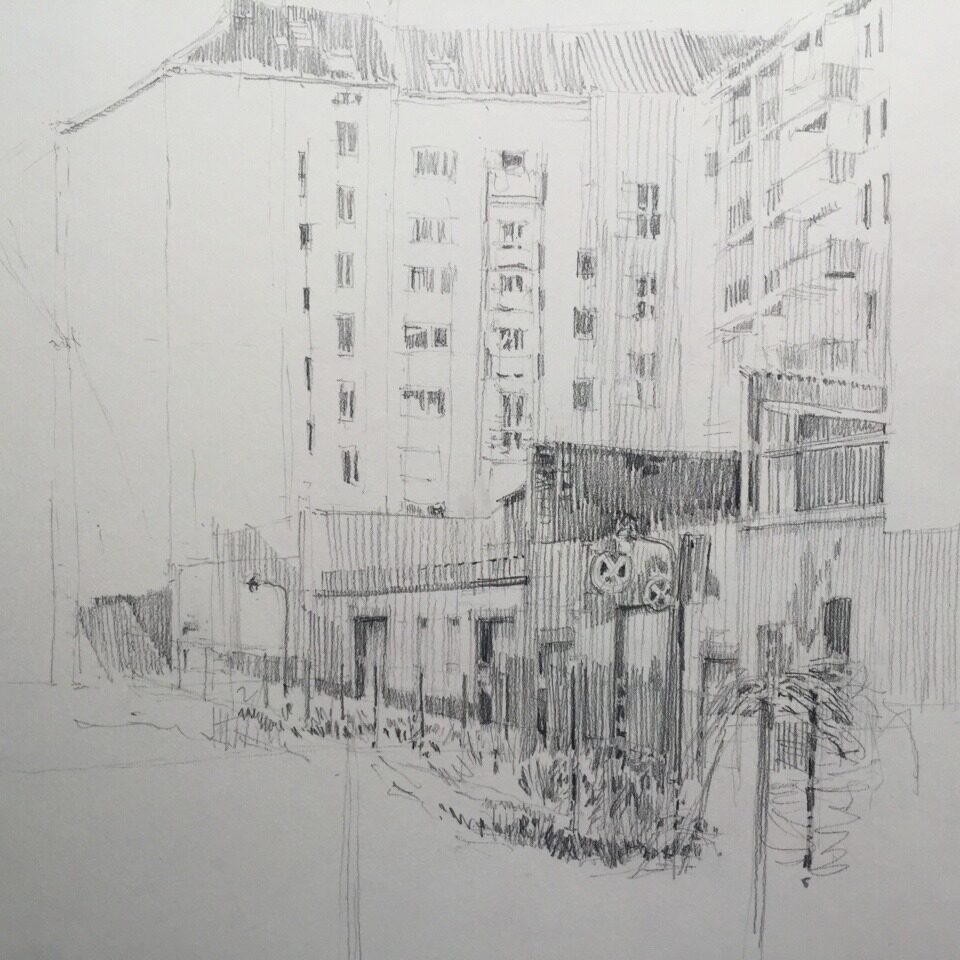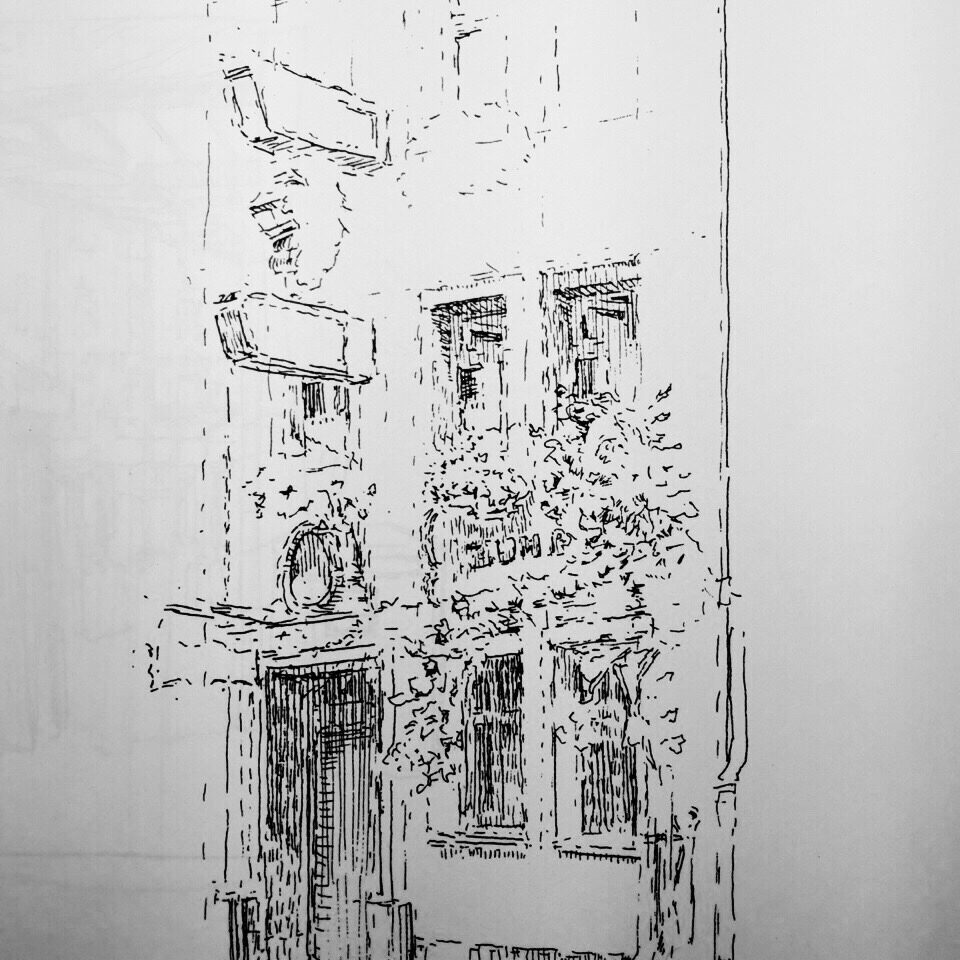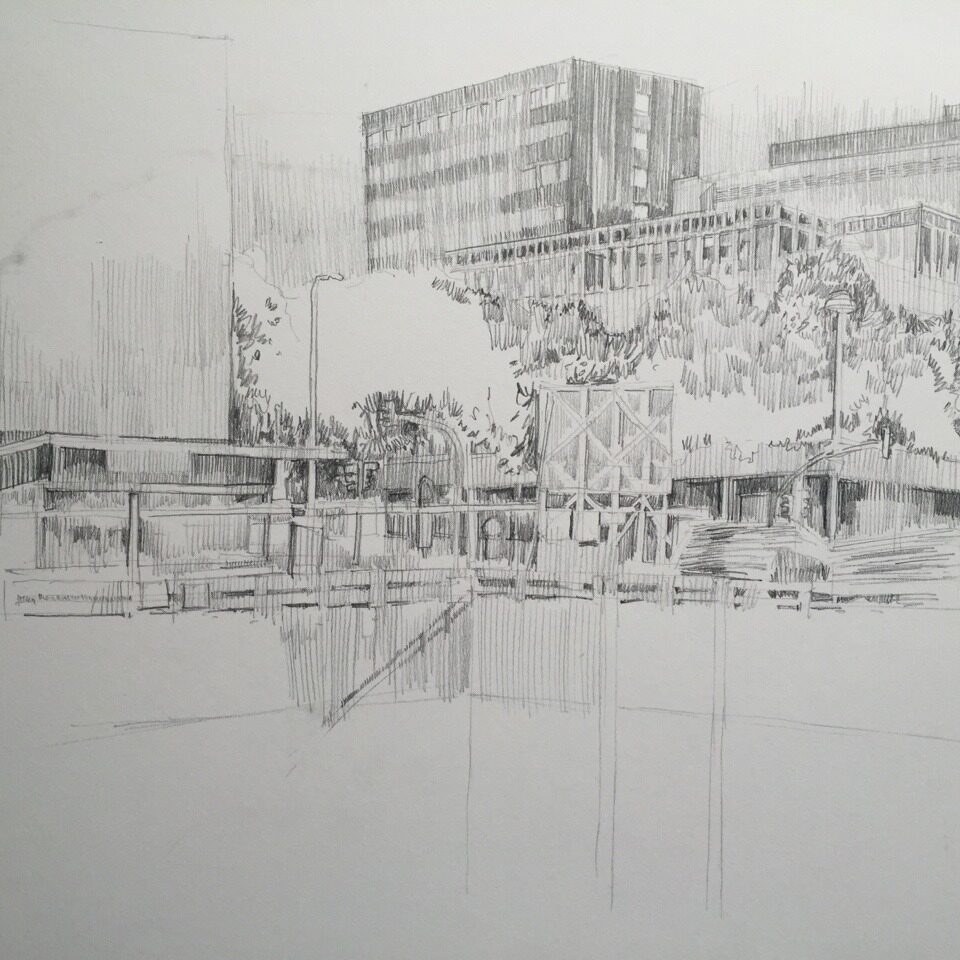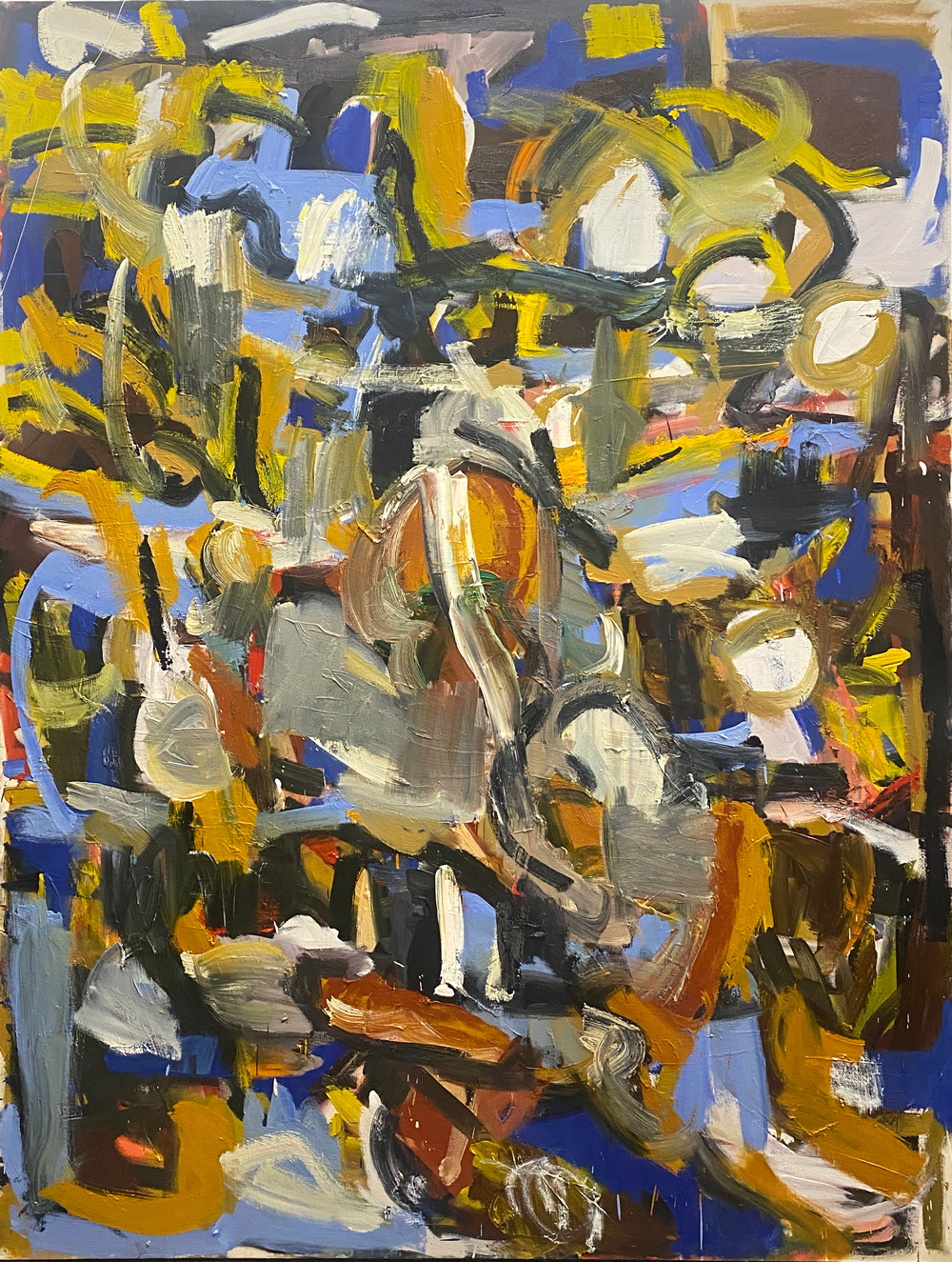
Untitled (2024) Oil on Canvas, 210 x 160 cm.
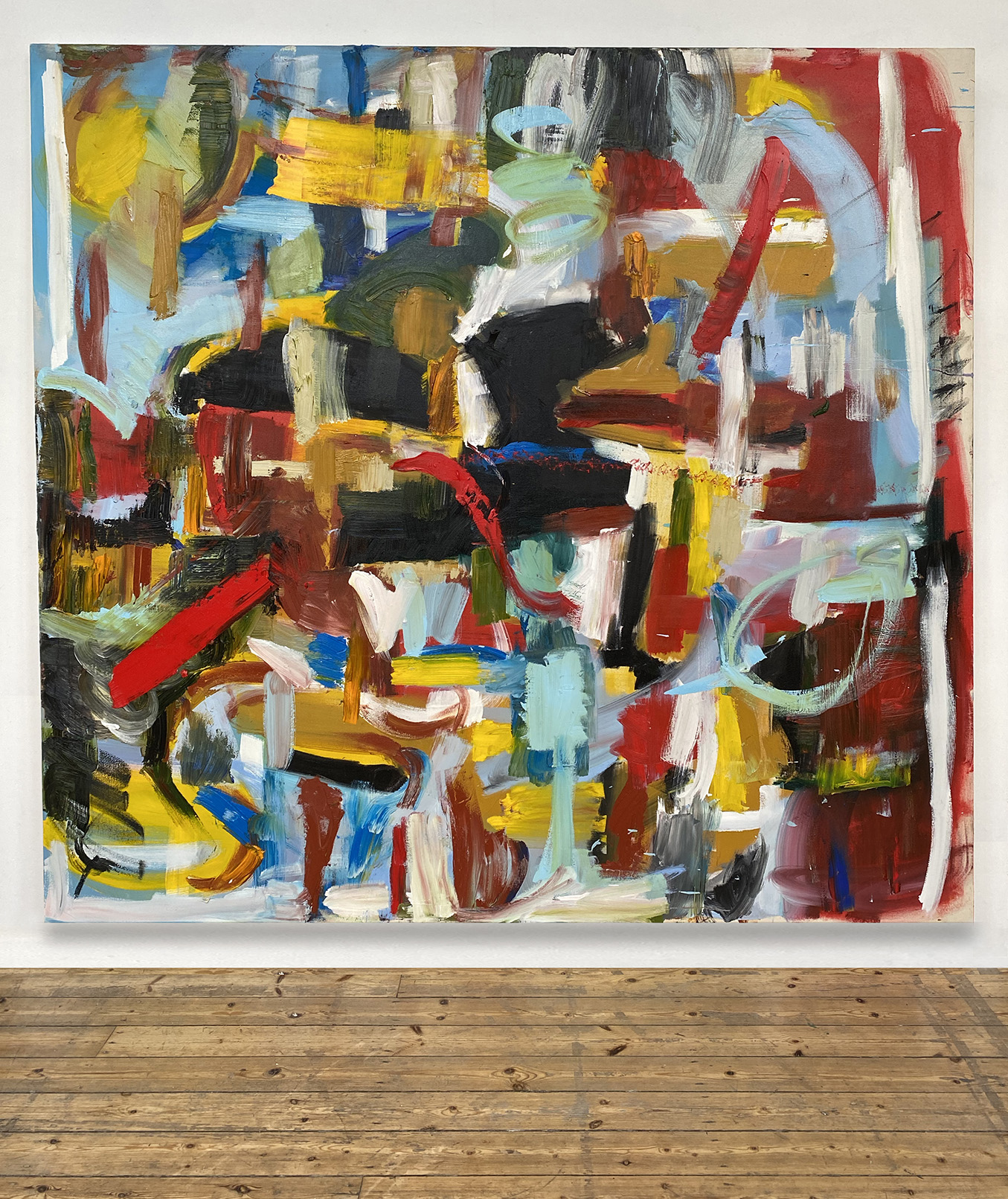
Space, 2022, Oil on Canvas, 210 x 210 cm.

Mark-making here is not an index of expression, where the traces of paint are irrevocably tied to the artist’s sensations. Instead, the registration of the mark, and its emphasis upon material facture, explicitly foregrounds the contingency of the image. The continual adjustments and elisions of the surface create the sense of an image perpetually in flux.
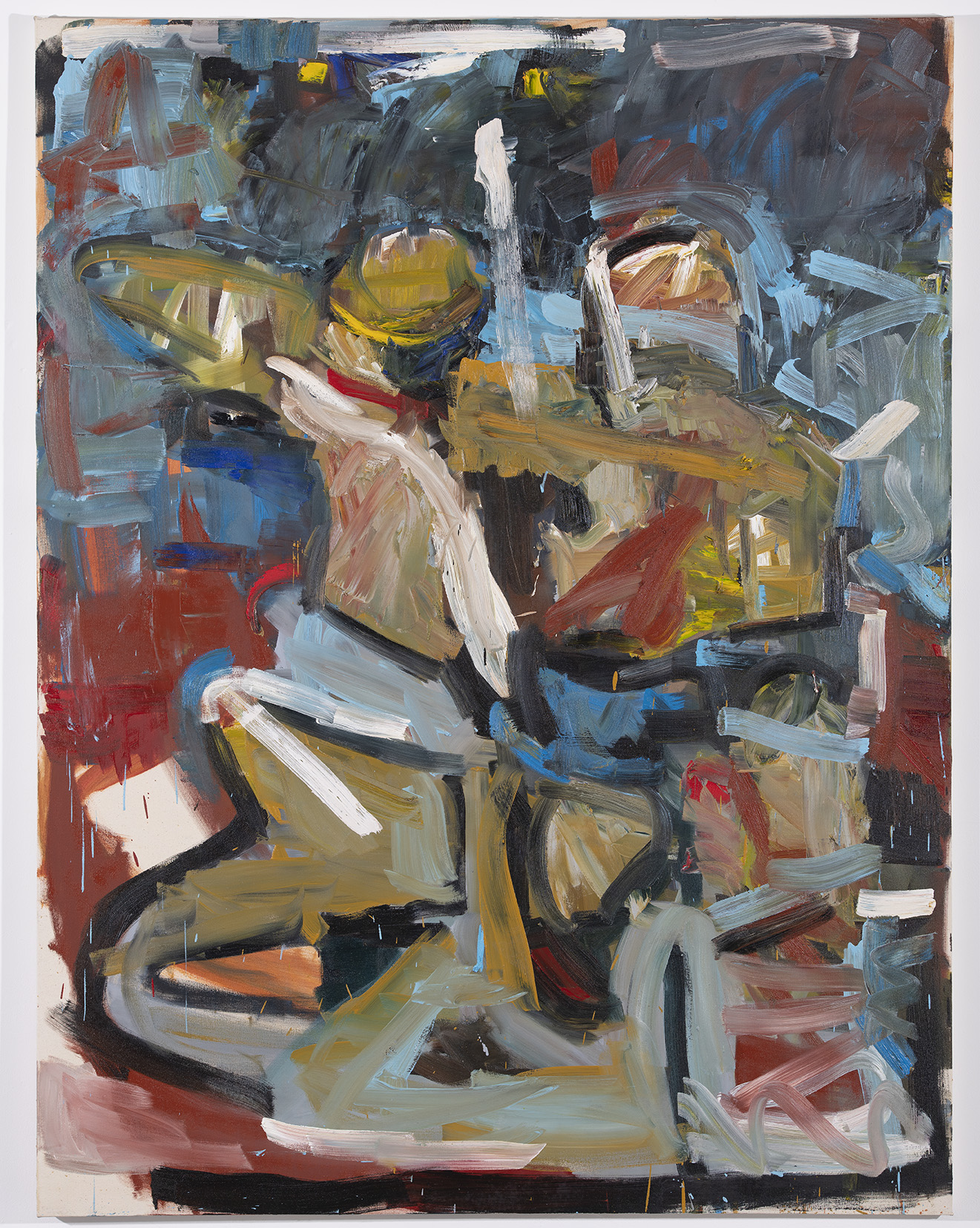
Untitled, 2021, Oil on Canvas, 210 x 160 cm

The recent body of work Tralles in Caria (2020-21) references the ancient Greek city of Tralles in the Southwest of Turkey. The use of archaeological sites and Greek sculpture discovered in Tralles, as source material for the work, allows me to rethink aspects of visibilities within the paintings. To what extent does the beginning of the 21 century suggest a change in our understanding of visibility and the idea of ‘complete’ or ‘transparent’ image.
Photos: Colin Davison
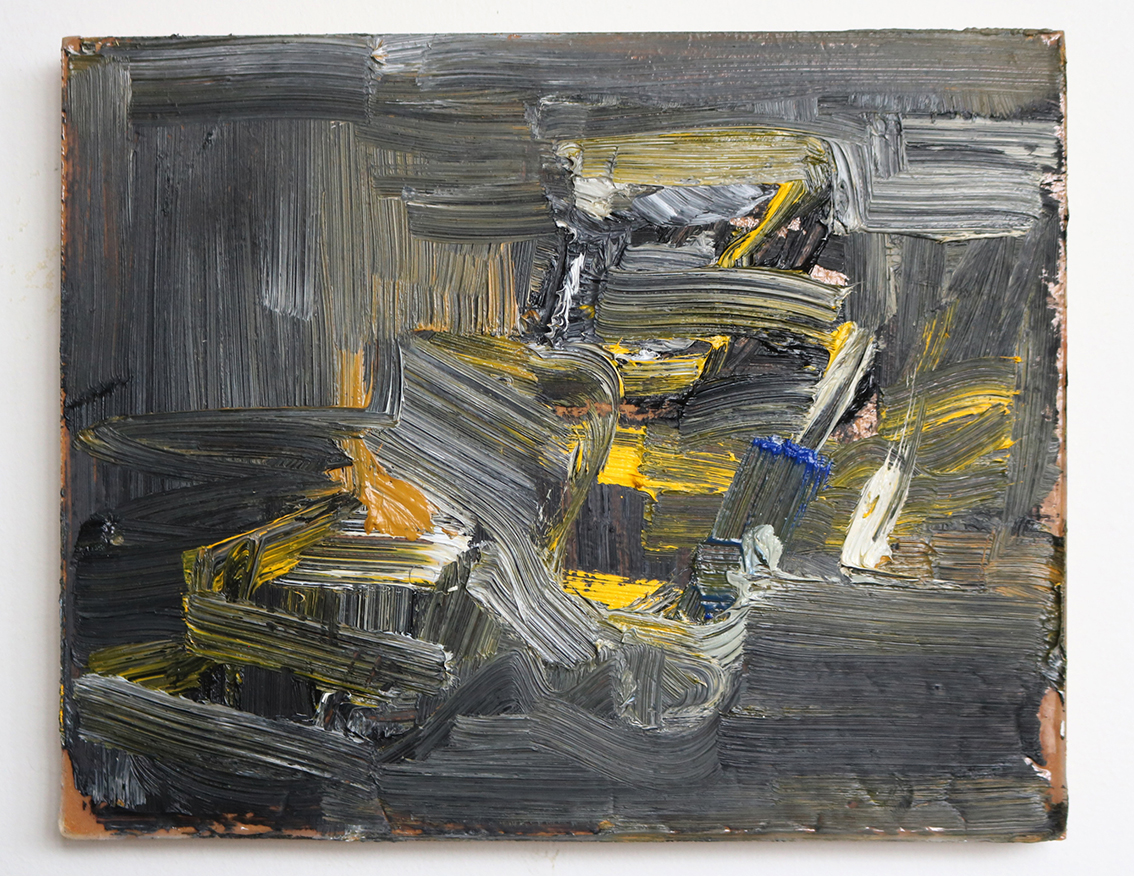

The possibility of a metaphorical falling or slipping, and the productiveness of the unexpected are closely related to the studio. The paintings reference the studio and its sense of interchangeability and fluidity, in order to suggest to move beyond a clear divide between the object/subject, reality/fiction. The openness and uncertainty resonate with a broader demand for doubt or mental agility in the process of creative practice and certain flexibility on a formal level.
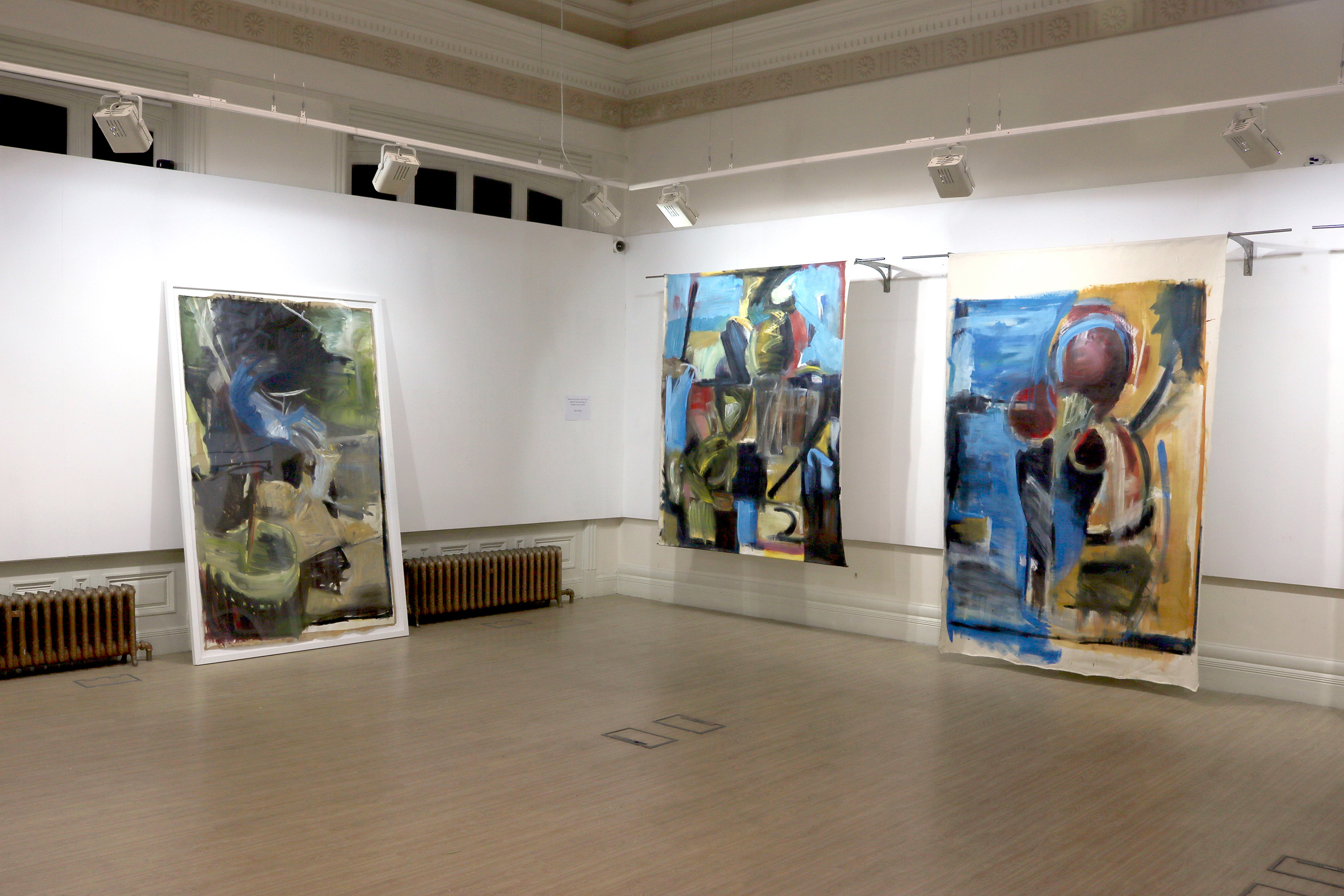
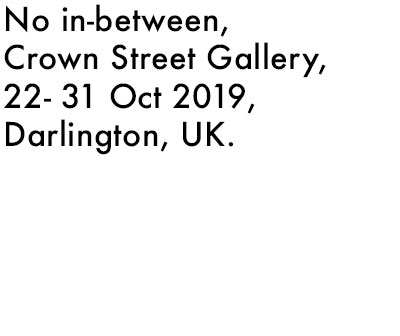
The exhibition explores the idea of erosion, collapse, constant change imposed on everyday objects and environments. The paintings in this exhibition deal with a slippery setting, endless ambiguities and its productive potential. In this instability, bodies seem to dissolve and images to disintegrate, leaving the viewer with a sense of ‘no pauses, no in-between’. Spaces and objects are bound to collapse, yet simultaneously something new emerges.

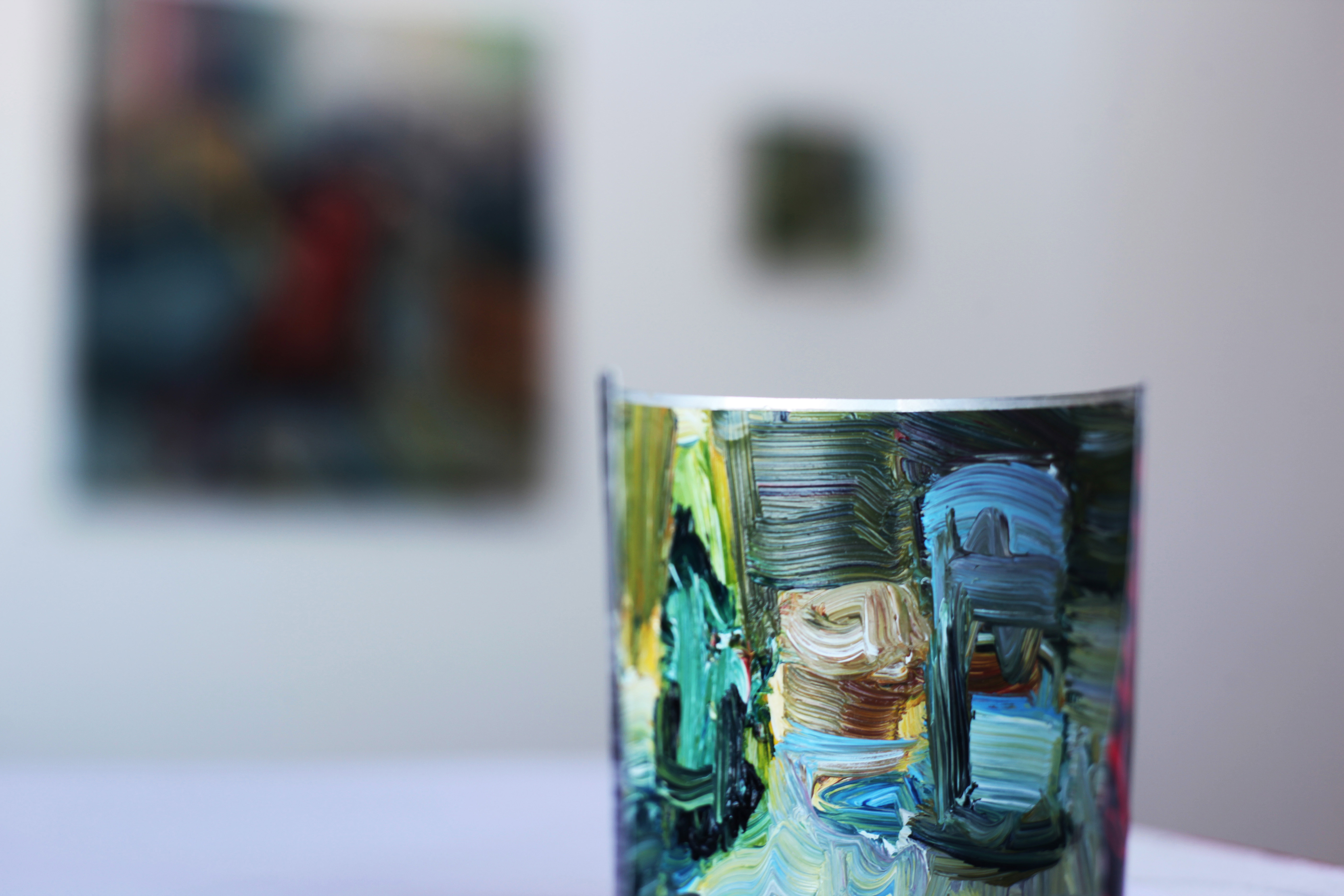
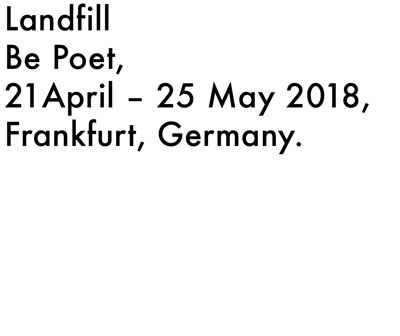
Oil sketches on cans (sizes variable). The series of paintings deal with our relationship to the outside world via seemingly banal, transitory scenes painted on aluminium cans. The sketch-like, small scale depictions explore fleeting moments as a productive space for painting, reflecting also on the use of the often discarded material of the cans.
Disappearance, destruction and re-emerging are not only seen as closely interconnected, but essential to the work process.
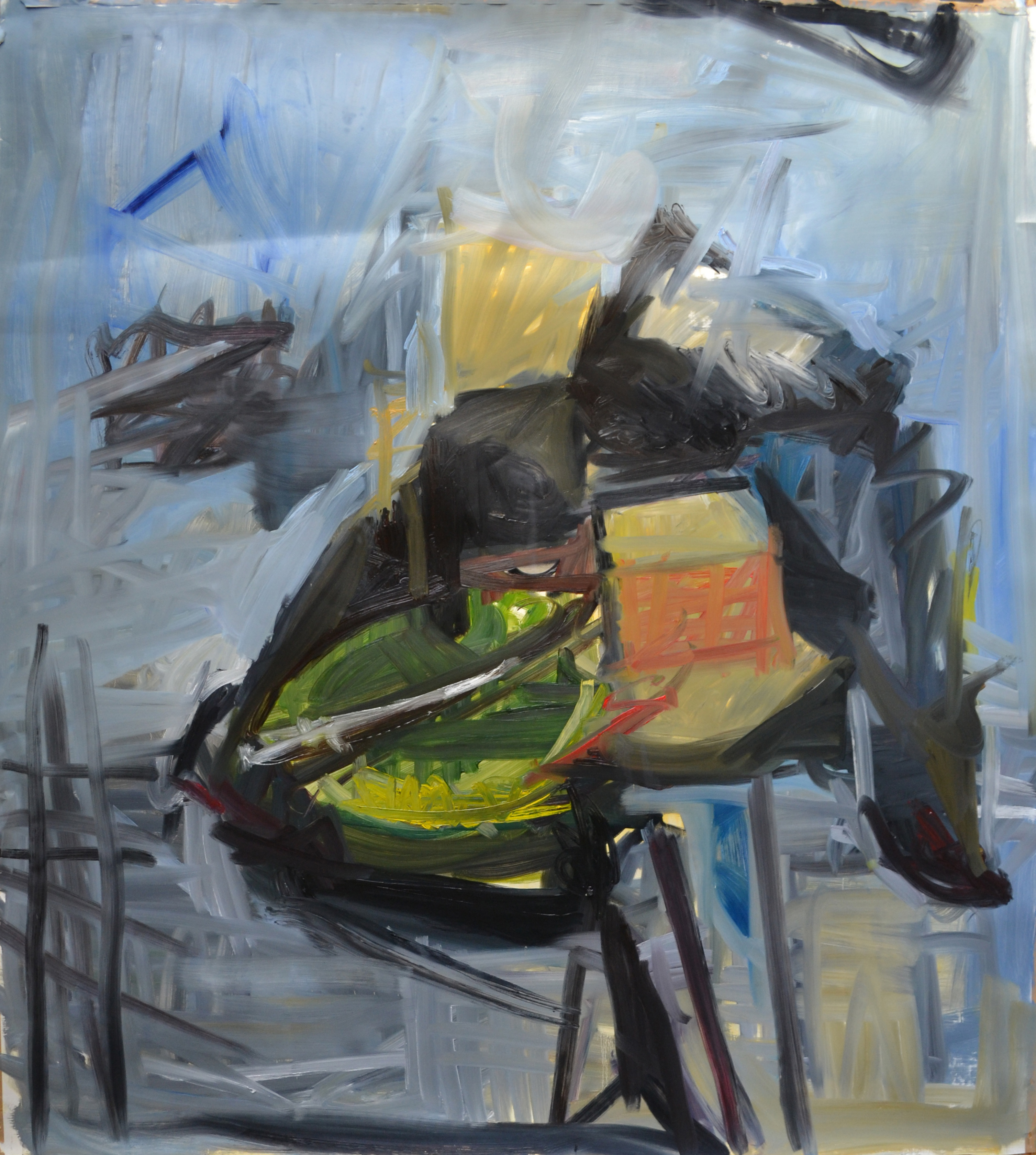
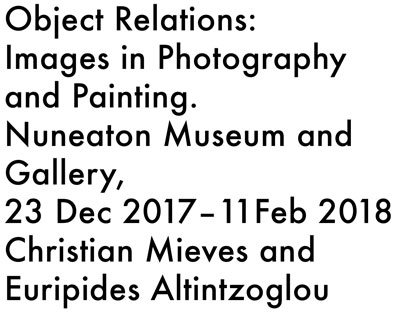
The relationship of photography and painting to the external world has been traditionally perceived in complex and sometimes contested perspectives. Abstraction and figuration are commonly attributed as intrinsic to painting and photography accordingly, with each discipline advancing a divergent approach to the image. The antagonistic character of painting and photography seems less valid today: Painting, similar to photography, eliminates or contests the link between trace, touch and gesture, and ‘its organic referent’.
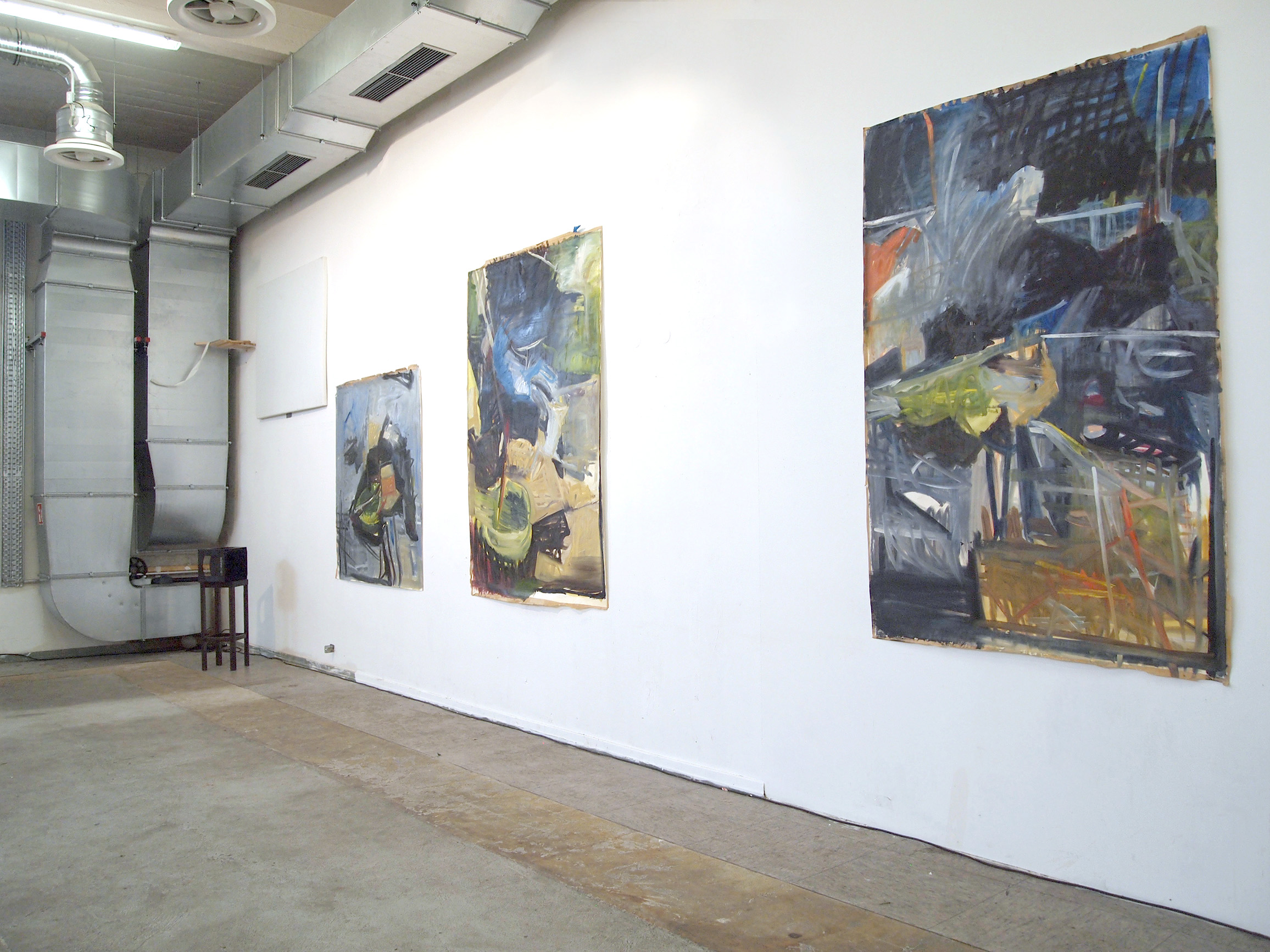
OLYMPUS DIGITAL CAMERA
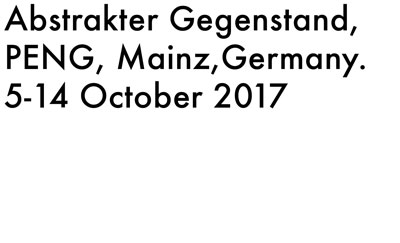
This group of paintings explores the collapse of representation where the moved, illegible, incomplete depiction of objects critiques the transparent, coherent image. The paintings question the extent illegibility and incompleteness permits a spatial continuum and overlap of temporalities. The focus on everyday objects and the dynamic make-shift nature of things that are constantly moved and unbalanced offer both a distancing as well as approximation to the object.


The paintings, influenced by Greek sculpture, challenge the clear notion of the motive and defy technical and stylistic models. The focus on the body shows an overtly expressive style. The emphasis on mark making stands in contrast to a clear ‘canon’ of a classical system and notions ofcompletness.
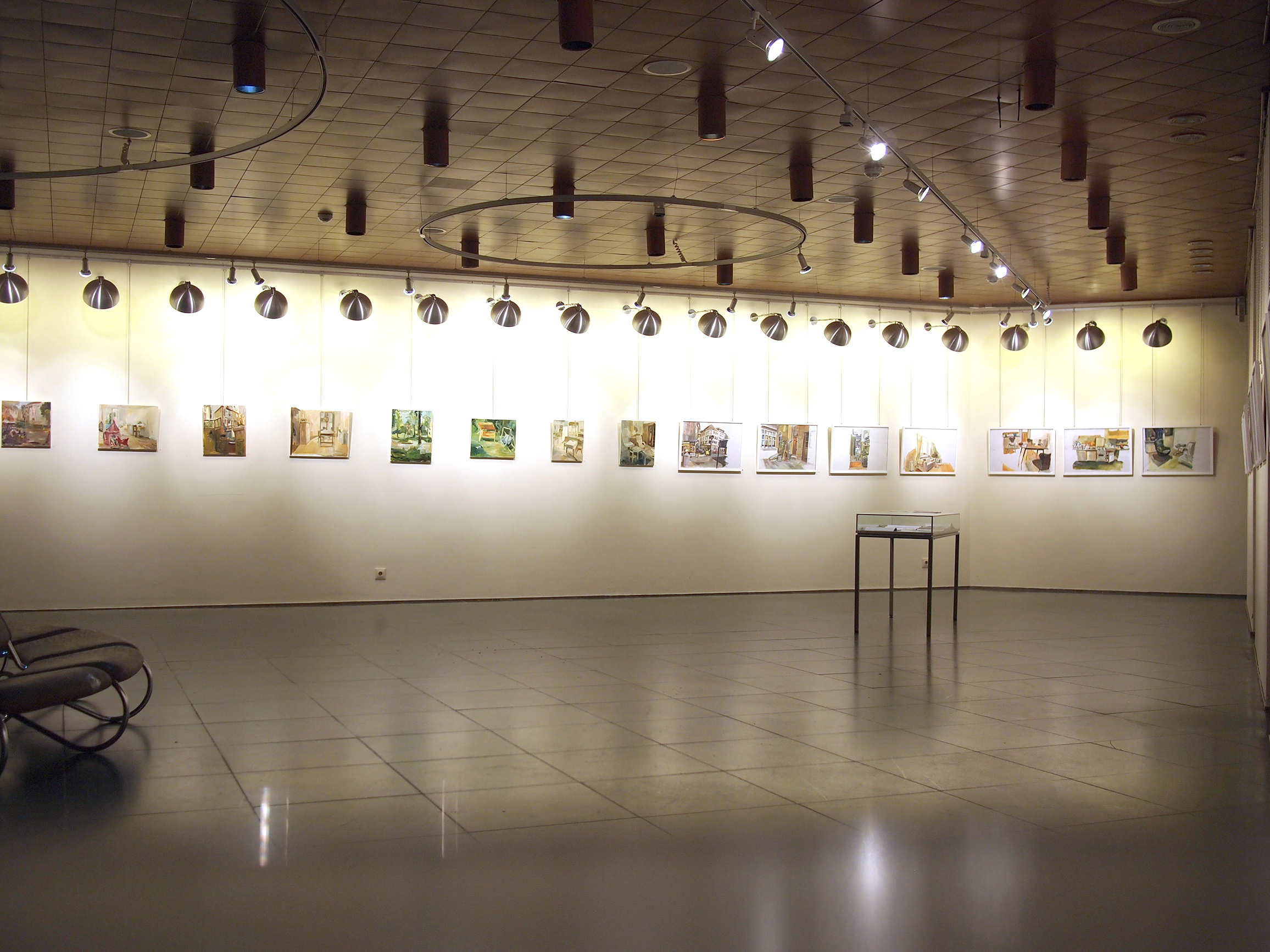
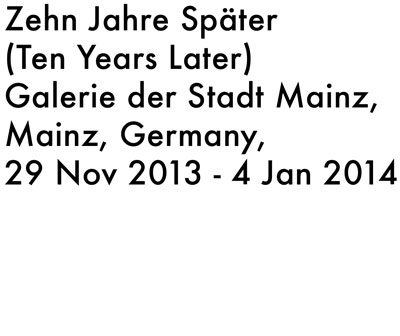
‘Christian Mieves positions himself within his series ‘Ten Years Later’ in the tradition of the genre of interior painting. Unlike any other space, the private interior space is in particular defined by its relation between the inside/ outside, private/public, individual/collective. No other subject has been marked by so many ambiguous responses and cultural imaginations as home sweet home. Contemporary artists often see the interior space as a direct reflection of the situation of the modern subject, between self –image and heterotonomy, safety and isolation, intimacy and violence.
Christian Mieves focuses in the project on flats and spaces over a period of 10 years. In the paintings, rooms don’t appear as primarily stable units nor as retreat defining identities […].’
'Ten Years Later: Shifting Spaces'
Dr Lars Spengler, Berlin, 2014

Shepherd, 2012, oil on canvas, 30 x 40 cm.
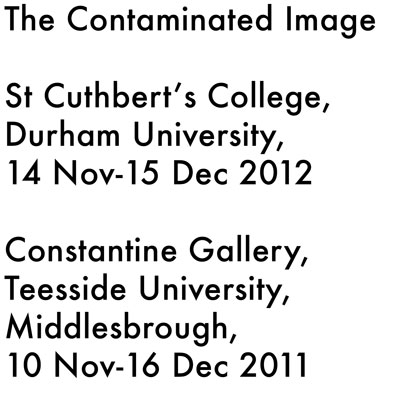
‘Christian Mieves’ recent paintings draw upon a variety of art-historical sources; others draw upon the broader field of photographic imagery, which includes disposable everyday objects. All of these paintings, however, are subject to a particular kind of treatment. They exemplify what I term the contaminated image: this process is at work on the painting surface, where the source image is always subtly modified through the painted gesture. The contamination of form can work across to the level of content [...] Sustaining this ambiguity is at the heart of Mieves’ practice. [...]’
Stephen Moonie, 2013
For additional information, please click here

